Emiko Davies's Blog, page 4
November 19, 2021
San Miniato’s White Truffle Festival 2021
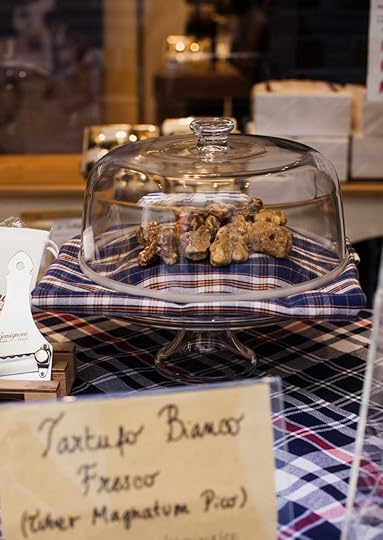
San Miniato’s annual White Truffle Festival has been a highlight for me ever since calling Italy home and falling in love with a boy from San Miniato 15 years ago — here is another article about the White Truffle Festival from the early days of the blog from back in 2010. And I have to say, quite happily, that it doesn’t change much. My favourite stalls are always in the same place, I know where to go back to for that great truffle pecorino, or that tasty fried snack or the best roast chestnuts. Year in, year out, you can bet they will be there, in the same spot and there is something very comforting about that.
So together with my San Miniato Dining Guide, this guide below to my favourite things at the White Truffle Festival (13-14, 20-21, 27-28 November 2021) should have you all sorted for a trip to experience this celebration of this incredibly rare and unique foraged ingredient. I am including, too, my top tips for choosing a white truffle, should you choose to go down that (delicious) road!
How to Navigate the White Truffle Festival:
Every main street and piazza is filled with food stalls, so you really can’t go wrong with a wander! But make sure to make it up the stairs to Piazza Duomo (you can also get there via Piazza della Repubblica where there is a lot to see too) which is where you will find the truffle tent and local winemakers tent. Then, you’ll find the main stalls in Piazza della Repubblica and Piazza del Popolo, which house regional delights from all over Italy — this is a treat for locals as it’s near impossible to get delicious Sicilian cannoli without actually going to Sicily, or spicy Calabrian nduja! There are taralli and olives from Puglia and cheeses from Sardinia, and more. In the loggiato of the church of San Domenico there are more stalls serving street food — a steaming lampredotto panino or a hearty bowl of ribollita, perhaps? Or maybe you’ll be curious to try the truffle beer? Along the Via IV Novembre you’ll find a good gelateria offering white truffle gelato and there are some little shops selling Christmas trinkets.
Just follow your nose!
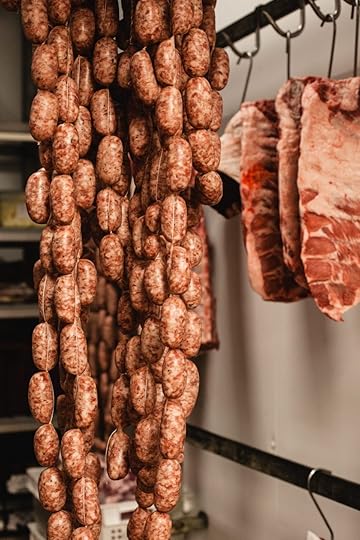
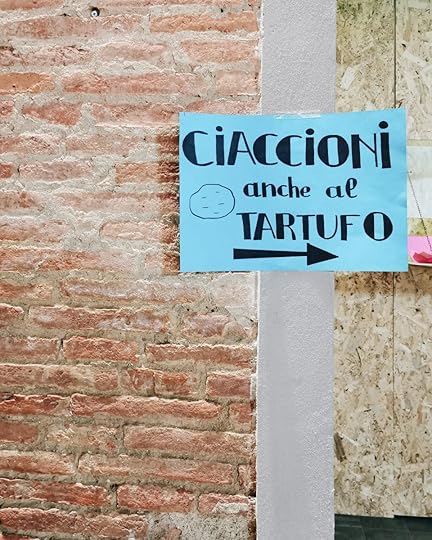
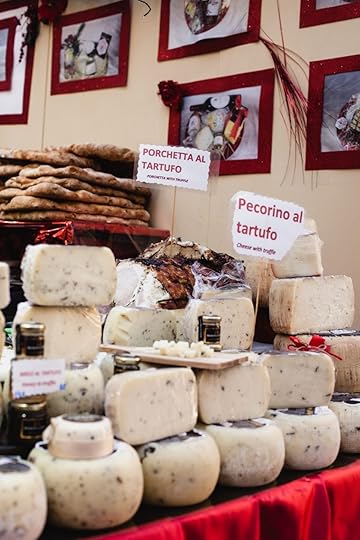
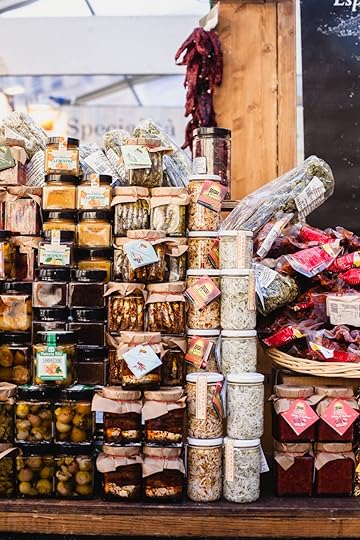
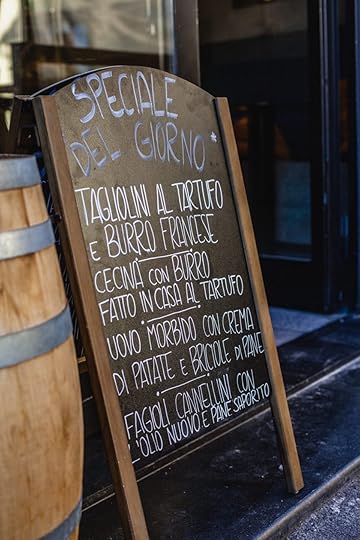

Things to try at the White Truffle Festival:
Ciaccioni — deep fried to order, these are fried flat breads about the size of a piadina. You can have it plain, but I’d suggest getting one of the filled ones. Prosciutto, truffled lardo, nutella, and more — pick one and you won’t regret it. Find these at the Misericordia (where you can also get white truffles and truffle products) on the way up to Piazza della Repubblica.Roasted chestnuts — in the corner of Piazza della Repubblica, just as you pass under the arch you’ll see the drum of roasting chestnuts in the corner. It’s the season!Truffle Sausages — If you’re only going to plan to buy one thing at the festival, make it a string of the truffle sausages at Falaschi butcher shop . They only make them for this moment and they are so good you should just eat them raw as so: slice down the casing and peel it off, then flatten the sausage meat onto a slice of hot, just grilled crostino. If you have it, grate some extra white truffle over it.Castagnaccio — I mentioned chestnuts but this is another Tuscan specialty made from chestnut flour, water and olive oil. Naturally sweet from the chestnuts, this batter is topped with pine nuts, sometimes walnuts and raisins, often too with rosemary. I am a huge fan of the one they make at Bar Cantini near Piazza al Popolo. It’s packed full of nuts and raisins, way more than the usual one. Very special.Cecina — A thin pancake like snack but made with a batter of just chickpea flour, water and olive oil, baked in a wood fired oven. Pizza del Popolo do an excellent one and for the festival they’re serving it with housemade butter with truffle, such a treat.Brigidini — paper thin, aniseed flavoured wafers, a tradition from the nearby town of Lamporecchio, that are often baked right there in the candy van with the huge sign that says “Addormentasocere” (candied almonds, also worth trying, that apparently make your mother in law fall asleep). You should smell the wafts of these wafers competing with the wafts of truffles.Torta di San Miniato — light as a cloud brioche doused in vin santo, this cake made by Maurizio Pasticcere is so delicate and soft it just disappears in your mouth as soon as you take a bite. Buy an extra.
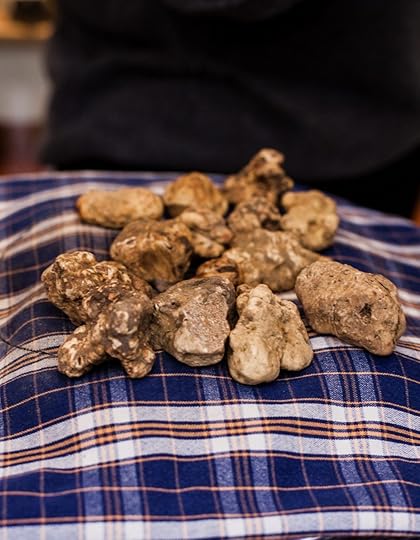
How to choose a white truffle
In case you would like to go home with a real, fresh white truffle (tuber magnatum pico), there is a special tent set up of the San Miniato tartufai in Piazza Duomo (next to the local winemakers tent) and it is here you should come, breathe in deeply, and take a slow walk around the different stalls. A word of advice, if you are serious about buying a truffle, come first thing in the morning (they open 10am on Saturdays, 9am Sundays). Not only will you get the best pick, but it will be quieter — the afternoon crush of curious onlookers can make this quite a crowded spot.
The cost
Prepare to pay anywhere from 4,000 euro a kilo to 7,000 euro a kilo at the moment. Yes, that’s really expensive! The lower price is generally for smaller, knobbly and broken bits, while the higher price is for perfectly round and larger pieces. To give you an idea of how precious white truffles are as opposed to black truffles, a new season black truffle goes for around 300-600 euro a kilo.
Why they’re so expensive
White truffles are so rare, they are only found in a handful of places in Italy, such as Alba in Piedmont, San Miniato and San Giovanni d’Asso in Tuscany and Le Marche. They grow about 20-40cm below the ground and humans can’t find them without a trained dog. Oh and they cannot be farmed, as black truffles can. And, it has been a terribly dry year, much too dry and too warm for white truffles, which need humidity (they are 80% water) and the cold to ripen. So they are scarce this year. In past “normal” years, the price of white truffles has hovered between 2,000 and 3,000. Re-reading that 2010 article, wow, what a great price truffles were that season, 1,200 a kilo! No wonder we ate tagliolini al tartufo so often that autumn! 2020 was a good year too, plus, restaurants were closed and so the price of truffles went down (a silver lining to being in our second lockdown in truffle season in our new home).
How much do you need
You don’t need a huge truffle to make a lovely meal, just 3-5 grams shaved over a dish for each person is enough. So if there are just 2 of you, that small, hazelnut-sized nugget might set you back 25-40 euro this year. It’s quite normal to pay between 35-50 euro for a plate of tagliolini al tartufo bianco this year in any restaurant or trattoria so buying and making your own is a good saving, actually!
How to use a White Truffle
As soon as you take it home, keep it in a glass jar in the fridge. Ideally, use it as soon as you can, the shelf life is very short — 5 days, maybe 7, but why wait? Clean it only right before you need to it. A gentle brush with a damp nail brush is good. Wipe with some kitchen paper and it’s ready to use. Whatever you do, do not cook it! You will just waste it. White truffle is best grated finely, perhaps over a warm dish of fried eggs, or buttery pasta. Keep it simple and delicate. Fat is the best companion for truffle so these two dishes are the best way to enjoy tartufo bianco.
You can pick up fresh tagliolini at the alimentari opposite Falaschi butcher shop, Così è se Vi Piace, or at many of the stalls in the festival. Grab some truffle butter while you’re at it, it helps to layer the truffle flavours, add a bit of parmesan cheese (but not too much), or simply fry a couple of eggs in butter, leave the yolks runny and dinner is ready!
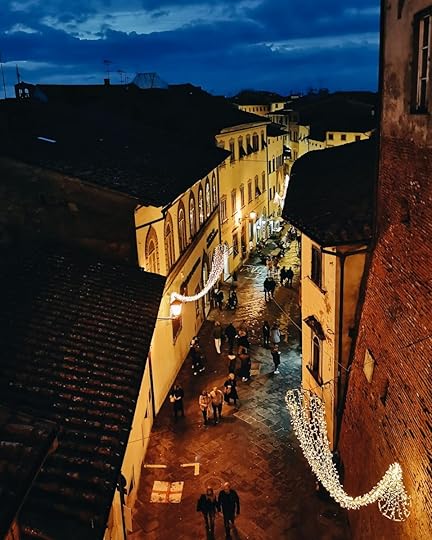
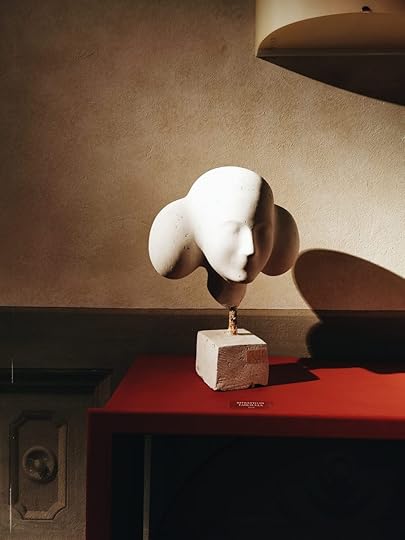
Other things to see and do
Tartufonie — At 4:30pm on Sundays there is a free classical music performance in a different church each weekend. On November 21 it will be in San Domenico (Piazza del Popolo), Antonio Vivaldi’s Four Seasons by the soloists of the Tuscan Chamber Orchestra and on November 28 it will be a choir in the Duomo of San Miniato. You need a Green Pass to attend.Quinto Martini — A stunning retrospective exhibition of 73 of the great Tuscan sculptor’s (1908-1990) work is on display (above) until November 28 at Palazzo Grifoni, 9am-12pm and 3pm-7pm. You need a green pass and it’s free!Rocca di Federico II — That tall tower that you can spot from miles away? That’s the Rocca or the watch tower. Built in the 1200s for Federico II, the king of Sicily, then destroyed in 1944, it was faithfully rebuilt in 1958. You can climb up it and get a spectacular view. The sunset from here is particularly special. Open 10am-3pm during the festival.Truffle hunt — See my workshops page or contact me for more information. We go on an exhilarating hunt for white truffles and we cook with them!For where to eat and sleep in San Miniato see my Dining Guide to San Miniato too.
Visiting the White Truffle Festival
In 2021 the festival will be held on three weekends, 13-14, 20-21 and 27-28 of November, starting at 10am on Saturdays until 11pm and 9am on Sundays until 11pm.
The main thing to know about the festival is that driving in and out of San Miniato is extremely restricted. Streets are closed as food stalls and tents take up every single piazza (and car park) in town and it becomes pedestrian only for the entire weekend while the whole town emanates the perfume of these precious tubers.
So how to get in if you aren’t already (cleverly organised) in town? There is a shuttle bus service that goes between two big parking lots in San Miniato Basso: either from the Palazzetto Fontevivo (both Saturday and Sunday) or the Pam supermarket (just Sunday). So if you are driving, park your car here and catch the shuttle bus (4 euro return ticket, children 14 and under are free). If you are coming by train from Florence or Pisa, get off at the San Miniato train station and you could walk to the Pam supermarket (15 minutes) for the shuttlebus, catch the 320 bus which leaves from the station every 30 minutes and takes you to Piazza Dante Alighieri in 15 minutes (note it is not available on Sundays). You can buy a bus ticket (1,80 euro) at the bar below the bus stop (or from an Italian phone number you can send a text message to 4880105 with the word “PISA” from your phone for a ticket). Or call a local taxi driver to bring you as far as it can go to San Miniato (Piazza Dante Aligheri), such as Claudio Bertini (335 527 5938).
The post San Miniato’s White Truffle Festival 2021 first appeared on Emiko Davies.
November 10, 2021
San Miniato Dining and White Truffle Guide
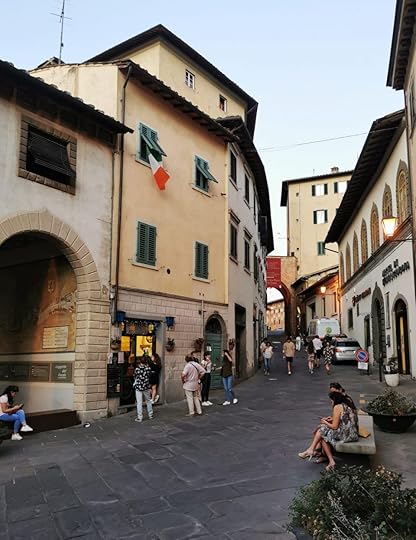
We have now called San Miniato, my husband’s hometown, our family home for the good part of this year and I admit that one of the reasons we found this Tuscan hilltop village so charming is the excellent quality of restaurants and food shops in this small historical centre. Other than being a fixture on the Via Francigena, the ancient pilgrim route, with picturesque views of the surrounding countryside from every angle you look, San Miniato is famous for being one of the rare places in the world that harbours prized white truffles — in season (October to December) you can taste them in every single place that sells food, from even the simplest bar, and the town celebrates this with their annual festival, Mostra Mercato del Tartufo Bianco and this year will be its 50th (you can see an old post from 2010 on it here — I haven’t missed one since moving to Tuscany in 2005! — see below for more on how to visit during the White Truffle Festival).
The fact that people are drawn here to try precious white truffles, which shouldn’t be cooked, but are best grated over warm, steaming plates of simple dishes such as buttery tagliolini (see below) or fried eggs, means that over the years, a growing number of quality restaurants has made San Miniato a food destination mainly for those from surrounding local towns. The restaurant selection is so good it’s not only for truffles that you will want to travel here for. It’s a place I’m very proud to share with you here in this dining guide and if you’d like me to show you around on a food tour or a truffle hunt, get in touch.
Situated between Florence and Pisa, and on the train line, and equidistant to Pistoia, Lucca, Siena or San Gimignano, means that San Miniato is very conveniently placed amongst the most important Tuscan cities. It’s also only 30 minutes from Pisa airport and the sea.

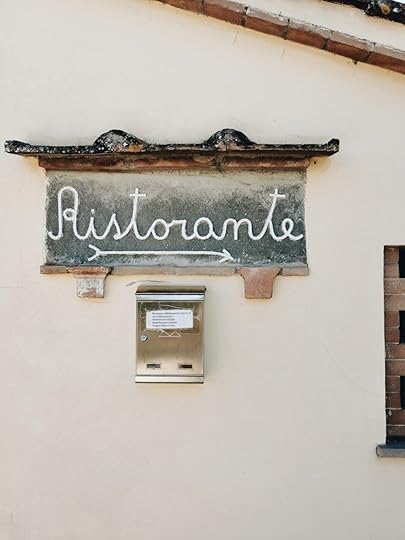
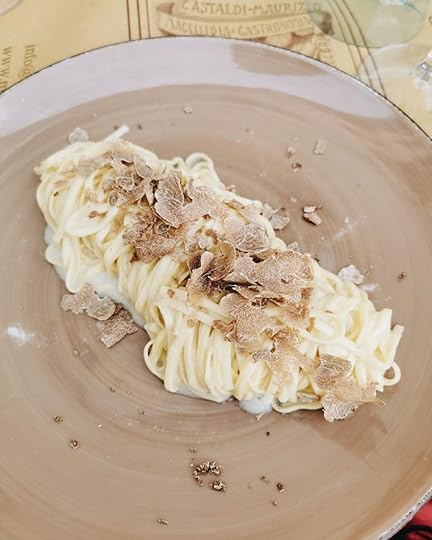
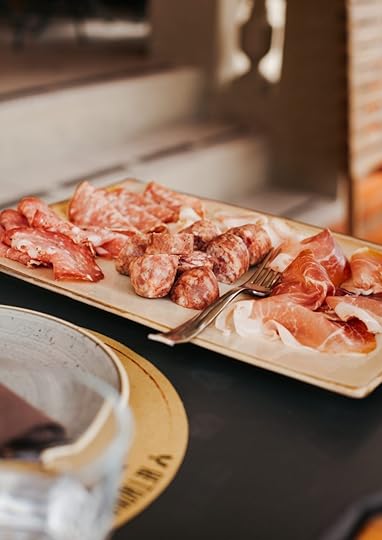
In the historical centre:
Sergio Falaschi: A fourth generation Slow Food butcher shop that has a casual restaurant out the back with the best view in town and wonderful charcuterie plates (above), traditional Tuscan primi and meaty mains. Here you will want to try all the things that they make, which are traditional salumi and sausages, with free range pork, no preservatives or additives: their sausages (in season the truffle sausages are the best!), Cinta Senese (a local Tuscan ancient pork breed) prosciutto, spuma di gota (a whipped cream made from pork jowl or guanciale), finocchiona (a larger, fresher Tuscan salame that is perfumed with fennel seeds) and mallegato, a spiced blood sausage that is served warm, the town’s only Slow Food presidium. If you’re feeling like a feast, choose a bistecca from the counter to be grilled for the table. Opening times vary seasonally so check the butcher shop (generally speaking it’s open for dinner in summer and for lunch in cold weather, closed Wednesdays).
Maggese: For something very special, Maggese (see photos below), headed by chef Fabrizio Marino (who spent 8 years at Joia in Milan, the first vegetarian restaurant in Europe to win a Michelin star) is a fine dining vegetarian restaurant in the heart of town. You can do a chef’s degustation (I would highly recommend this, also the wine pairing) or you can just choose any individual dishes without doing the tasting menu. It’s an incredible eating and drinking experience for anyone, vegan, vegetarian, omnivores alike. For those who love counter dining there is a small counter for two here, which gives you a great view on the kitchen. Open for dinner only.
La Piccola Osteria del Tartufo: As the name suggests, this is a tiny place in the town’s main piazza which has a very simple, small menu, rather meat heavy (high quality, however, as the meat comes from Lo Scalco Butcher shop in San Miniato Basso, lower San Miniato) and local wines. I would come here for their stracciatella and hazelnut risotto, a classic dish of tagliolini with truffles (above) or their burgers. Literally everything on the menu comes with truffles on it (black or white in season). Open lunch and dinner.
Pizza del Popolo: A small, pizza by the slice place but not your regular pizza. This is vegetarian, 48 hour fermented, organic and biodynamic ancient grain sourdough bread and pizza. They also do excellent panzerotti (fried to order!) and Sanminiatese style organic chickpea flour cecina and arancini with melty gorgonzola centres and cookies made with buckwheat flour, hazelnut or the Tuscan chestnut specialty, castagnaccio. They have local beer on tap or can fix you a spritz. You can eat in on one of the tables in the outdoor/covered terrace or takeaway. Closed Mondays.
Birra e Acciughe: I can’t tell you how many times this tiny place has saved me but sometimes you just need a warm baguette the length of your arm filled with creamy butter and anchovies (for me) or a hot dog (for the girls) to stave off a melt down! There is a surprising selection of over 60 artisan beer and ciders and did I mention the panini are warm? It’s too small for seats but most customers use the benches nearby or simply stand (see top photo). Closed Mondays.
Pizzeria Demetra: Not the traditional pizza, but a sourdough pizza made with a mixture of wheat, rice and soy flours, left to rise for 120 hours and gourmet, seasonal toppings. The twice cooked technique here means a very crunchy crust. For those who want something other than pizza, they also have big salads, cheese and charcuterie plates, focacce and artisan beers. In the summer only dinner but in cold weather open for lunch and dinner.
Maurizio il Pasticcere: The place for a classic Italian breakfast — cappuccino and cornetto! Everything is made on site. Their sweet and savoury pastries and pizzette are particularly soft, fluffy and cloud like! I particularly love the sfoglie (puff pastry pockets filled with custard, apple or rice) and their miniature almond biscotti. In summer they have a good selection of housemade gelato and at Christmas they do pandoro, panettone and delicious panforte. Closed Monday afternoons.
Ethan’s Bar: This cupboard-sized bar is the place to come for aperitivo or an after dinner drink. Owner and mixologist Alessio Cintelli makes wonderful cocktails using well-researched liqueurs and ingredients
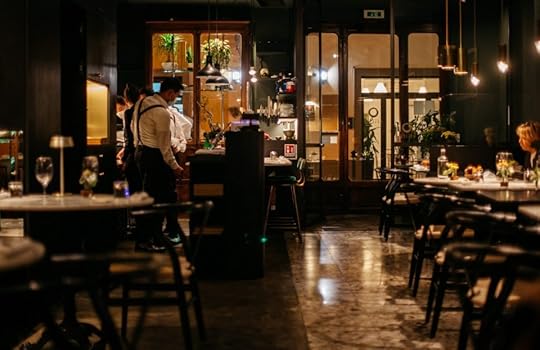
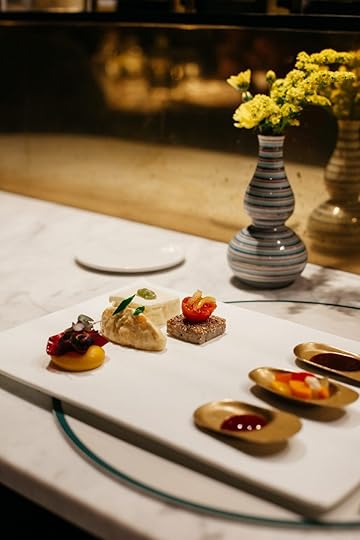
Out of town:
Papaveri e Papere: Just a 5 minutes drive downhill from the town centre is this wonderful restaurant serving modern, well executed Tuscan cuisine. Chef Paolo Fiaschi creates beautiful dishes based on Tuscan specialties and traditional ingredients, including a good selection of seafood, meat and vegetarian dishes, such as soft poached egg with pumpkin flan and white truffles (below), fresh tagliolini with guinea fowl ragu, bitter greens and taggiasche olives. Save space for dessert, they are just as beautiful to look at as they are to eat. Double check the opening times as they change seasonally — in the summer they are closed Sunday evenings, in cold weather Wednesdays they close.
[image error] [image error]
Taverna dell’Ozio: A 10 mins drive from the town centre of San Miniato you can reach this wonderful but small rustic tavern (red and white checkered tablecloths and all) in the countryside neighbourhood of Corazzano. I will say right away it is always very hard to get a reservation here, especially during truffle and mushroom season (their specialties) as it is small (even smaller since the pandemic restrictions means less people inside) and is one of the few places in the area where you can try truly traditional, Slow Food dishes like game, snails and all the truffle and foraged mushroom dishes of your dreams. You may get lucky when they announce space available on their facebook page! Closed Mondays.
Collebrunacchi: A favourite restaurant recommended by my butcher (Falaschi), this wonderful trattoria is about a 15 minute drive through the countryside and is best for a traditional, big Tuscan meal with the works: antipasti of mixed crostini and pickles (below), tortellini in brodo, ribollita or pappardelle with hare sauce and wood fired grilled meats, including game (their specialty) and old school desserts like zuppa inglese. The prices are about 15 years old and the whole experience is, simply put, one of the reasons why I love living in Tuscany. They also have a B&B. Closed Mondays.
Cosimo Maria Masini: While not a restaurant, I highly recommend visiting this winery which is less than a 15 minute drive away. You can do a wine tasting (and olive oil tasting) here or simply visit the shop to take some bottles home. Francesco, the wine maker, does a wonderful explanation of how and why his winemaking is natural, organic and biodynamic. They also have a holiday house with a pool on site.
[image error]
Markets
Every Tuesday morning you’ll find the weekly mobile market in Piazza Dante Alighieri, while the third Sunday of the month is the Slow Food Market with local farmers and their produce (goat cheese, honey, sourdough bread, wine, salumi, fresh produce). The first Sunday of the month the historical centre hosts a pretty good flea market that lasts all day until 7pm where you can find all kinds of treasures, including textiles, cameras, furniture, paintings, toys, green glass from Empoli and ceramics.
Visiting the White Truffle Festival
In 2021 the festival will be held on three weekends, 13-14, 20-21 and 27-28 of November, starting at 10am on Saturdays until 11pm and 9am on Sundays until 11pm.
The main thing to know about the festival is that driving in and out of San Miniato is extremely restricted. Streets are closed as food stalls and tents take up every single piazza (and car park) in town and it becomes pedestrian only for the entire weekend while the whole town emanates the perfume of these precious tubers.
So how to get in if you aren’t already (cleverly organised) in town? There is a shuttle bus service that goes between two big parking lots in San Miniato Basso: either from the Palazzetto Fontevivo (both Saturday and Sunday) or the Pam supermarket (just Sunday). So if you are driving, park your car here and catch the shuttle bus (4 euro return ticket, children 14 and under are free). If you are coming by train from Florence or Pisa, get off at the San Miniato train station and you could walk to the Pam supermarket (15 minutes) for the shuttlebus, catch the 320 bus which leaves from the station every 30 minutes and takes you to Piazza Dante Alighieri in 15 minutes (note it is not available on Sundays). You can buy a bus ticket (1,80 euro) at the bar below the bus stop (or from an Italian phone number you can send a text message to 4880105 with the word “PISA” from your phone for a ticket). Or call a local taxi driver to bring you as far as it can go to San Miniato (Piazza Dante Aligheri), such as Claudio Bertini (335 527 5938).
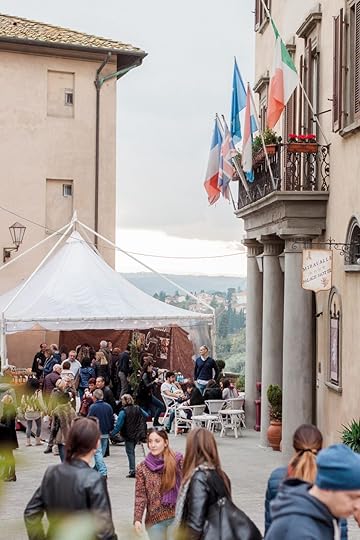
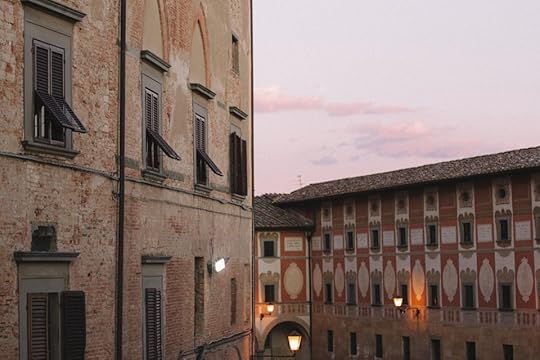
Where to Sleep:
Here are some places to stay right in the heart of the historical centre.
Hotel San Miniato, a restored 13th century monastery
Le Finestre del Seminario, recently restored, simple but spacious rooms in the 17th century Seminary building of San Miniato (above)
LUI apartment on Airbnb
LEI apartment on Airbnb
Orange apartment on Airbnb
Ser Ridolfo Loft
The post San Miniato Dining and White Truffle Guide first appeared on Emiko Davies.
October 28, 2021
Cibrèo, a forgotten Florentine dish
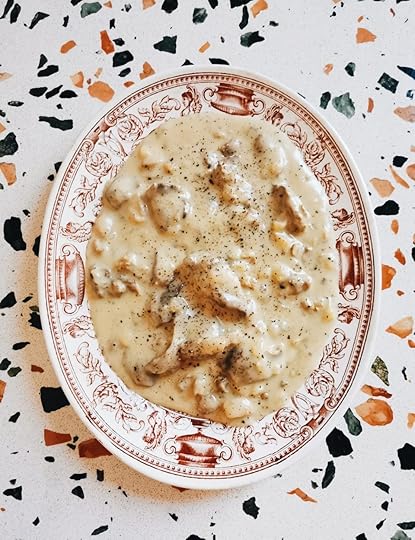
I know, I know, the ingredients might be challenge — chicken combs and testicles aren’t the easiest to obtain or to handle for some — this isn’t for the faint of heart. But I will say that this is a wonderful, divine and very special dish with an incredible Florentine history, and I think in today’s context is still extremely relevant as a sustainable and respectful choice for omnivores who care about eating for the planet.
I wrote a lot more about that for my newsletter, which you can see here, but I think it is still the same argument I have been making for the ten years I’ve had this blog — that eating offal is important as a conscientious onminvore, and now more than ever.
And aside from that argument, the other reason you should try this is because it is simply divine. Catherine de’ Medici was so fond of it she almost made herself sick from eating too much of it, the story goes. And in fact the first thing I noticed about this dish that the Florentine Queen of France was so enamoured of, is how incredibly luxurious it tastes — creamy, delicate, melt in the mouth. You could easily imagine it eaten with truffles (as chicken combs were often prepared with in French cooking). This is no peasant dish. This is something special. In Florence today, you’ll be hard pressed to find many restaurants and trattorie serving this historical dish, but one place that is famous for it is Enoteca Pinchiorri, Florence’s only three Michelin star restaurant. So that should give you a hint, too, at what kind of dish we are talking about here.
Below you’ll find the traditional recipe for Cibrèo and a recipe that turns into a stuffing for cappelletti pasta, a dish that was so good my husband Marco was moved to tears!
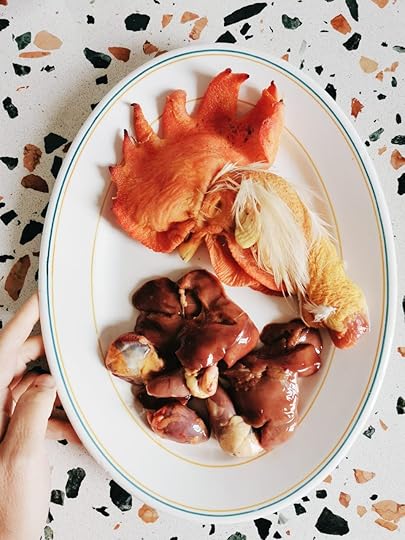
Cibr è o
This refined, classic Florentine dish could be served as antipasto or a main, here the proportions for four would make it a main dish. This recipe is adapted from Paolo Petroni’s Il Libro della Vera Cucina Italiana.
For 4 people
1 cockscomb and wattle (the fleshy hanging part under the beak)1 ½ tablespoons of butter2 tablespoons olive oil4-6 leaves of sage1 small onion, finely sliced or chopped60 ml (¼ cup) dry white wine120 grams chicken livers, halvedflour for dusting70 grams chicken hearts, halved lengthways70 grams chicken testiclesgrating of fresh nutmeg250 ml of stock2 egg yolksjuice of ½ lemonBlanch the crest and wattle in boiling water for a minute or two then remove, and when cool enough to handle, scrape off the fine, papery skin, then chop into bite sized pieces.
In a pan, melt the butter with olive oil over low heat and add the sage and onion, cooking until the onion is translucent and softened but not coloured, about 5-7 minutes, then turn up the heat to low-medium, add the crest and wattle, followed by the white wine and cook for 15 minutes.
Dust the livers in flour to cover, then add them together with the hearts and testicles, to the pan. Season with salt, freshly ground pepper and nutmeg and continue cooking for another 15 minutes, adding stock to the pan as you need to keep braising the chicken.
In a small bowl, whisk together the yolks and lemon juice. Add a splash of stock too, then pour it over the pan and stir gently for a minute to allow the yolk to thicken then serve immediately with more freshly ground black pepper and plenty of crusty bread to mop up the sauce.
[image error]
Cappelletti di cibrèo
If you want to get fancy or propose this dish in another way and turn it into pasta, an idea inspired by a wonderful meal of ravioli di finanziera (a similar dish of offal and chicken crests) at Ristorante Consorzio in Torino, we made cappelletti (you could also do simpler ravioli following the method here but I think you’ll agree the cappelletti are adorable). I like to use a dough really rich in egg yolks for making filled pasta, hence the number of yolks required here. If you’re wondering what to do with all the egg whites, I love Edna Lewis’ egg white pound cake.
400 g plain (all-purpose) flour, plus more for dusting2 eggs, plus 5 yolks (set aside 1 egg white for later)2 tablespoons water
60 ml (1/4 cup) or so of stock (or water) for reheating the sauce if necessary
50 grams cold butterFreshly ground pepper
Put the flour in a bowl and make a well in the centre. Place the eggs, 4 of the yolks (save one for the filling) and water in the well. With a fork, begin to whisk the eggs, incorporating the flour little by little until you can no longer whisk with the fork. Use floured hands to combine the rest of the flour until you have a smooth, elastic dough. Wrap in plastic wrap or pop under a bowl on the bench and let it rest at least 30 minutes.
Strain the Cibrèo (warmed if necessary) to separate the sauce from the rest of the ingredients. Set aside the sauce and blend the rest of the ingredients in a food processor with about 50 grams of grated Parmesan cheese so that it is stiffer, quite like the consistency of ricotta.
Cut the dough into four pieces and dust with flour. Roll out one portion of the dough (I like doing one portion at a time) using a pasta machine or rolling pin, keeping the rest of the dough covered. The dough should be thin enough so that you can see your hand through it. Cut out rounds with a cookie cutter (about 7cm/2 3/4 in in diameter) and roll the scraps back up into a ball (you can roll this back out later) and keep these on a wooden board dusted with flour while you finish cutting out the rounds for this portion of dough.
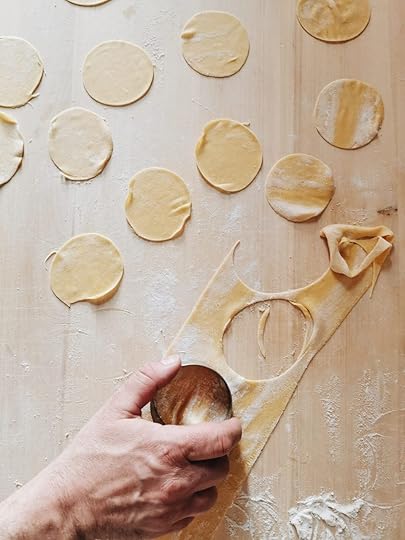
With two teaspoons, scoop a teaspoon of filling onto the centre of each round. Have a little bowl of water handy (or use the extra egg white) and dip your finger into this and then wet the edge of the pasta all the way around. Now fold the round into a half moon, squeezing out gently any air from inside, then fold the two ends of the half moon to meet each other in the middle — and there you have your first cappelletto!
Continue with the rest of the rounds, setting aside the finished cappelletti on a wooden board dusted with flour (alternatively you can place them on a baking tray lined with parchment paper). Then continue with rolling out the next portion of dough and so on.
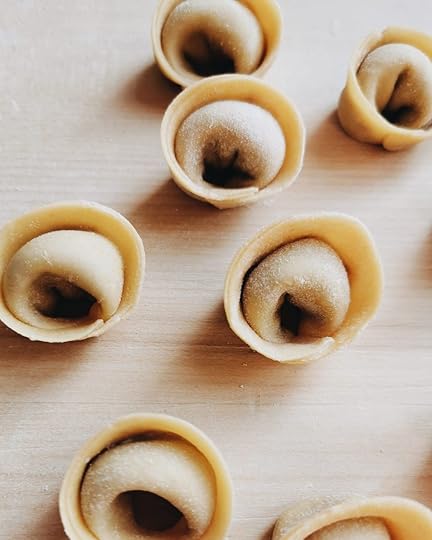
You can store this pasta in the fridge for a few hours until you are ready to cook, or you can cook them right away.
To cook the cappelletti, gently tumble them into a pot of simmering, salted water. They will take only about 2 minutes to cook. In the meantime, heat up the sauce very gently with a splash of water or stock and once warm, add cold butter and turn off heat, swirling until it melts. Drain and plate the cappelletti, then distribute the sauce over the top of each dish and finish with plenty of freshly ground pepper. Marco loved pairing this with a glass of dessert wine (Vin Santo), which is unusual but works incredibly well.
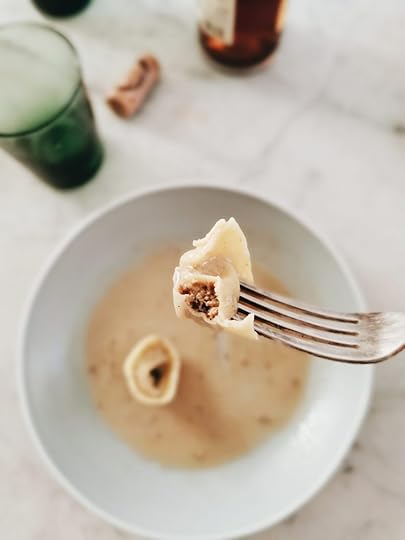
The post Cibrèo, a forgotten Florentine dish first appeared on Emiko Davies.
October 4, 2021
The 11 best panini in Florence that aren’t *that* panino
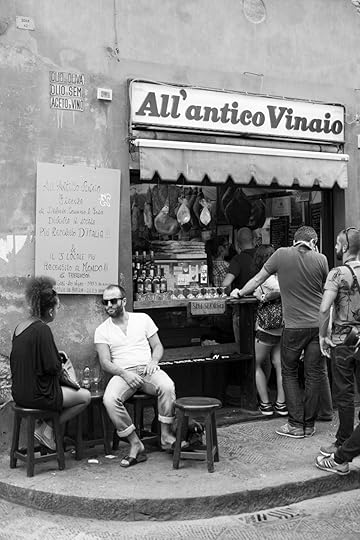
We used to live on Via dei Neri, the street that runs from the back of the Uffizi Gallery towards Piazza Santa Croce. It was more than 10 years ago now, when it was still a residential neighbourhood of central Florence. Despite being in the shadow of Palazzo Vecchio and two steps to all the monuments, people lived here — you could tell from the little shops like the fruttivendolo for fresh fruit and vegetables, the bakery and even the little dry cleaner. They were shops for locals. There is still a butcher shop there, but I doubt anyone who shops there now is a local. We’ve all been driven out by airbnbs and those little shops are no more — they’re all paninoteche, sandwich shops.
When we lived on that street there was a wonderful place we used to pop into to grab a sandwich on occasion. It was across the road from our apartment, after all. We were on a first name basis. You could waltz in there anytime and order a fantastic slab of schiacciata filled with whatever you like (finocchiona and stracchino was my favourite). There was a help yourself bucket of wines and proper glasses. We would perch on a stool and have a perfect lunch, often in there elbow to elbow with the guys who check tickets at the Uffizi gallery entrance, who were regulars. It was just a good local spot, doing what Florence does really, really well: quick, often standing, hole in the wall panini.
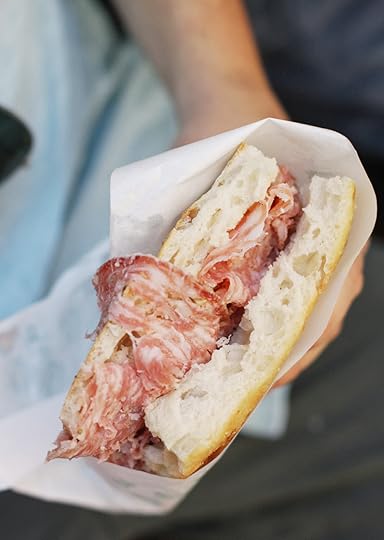
Then something really strange happened. Suddenly our neighbourhood panino place was named number 1 restaurant in Florence. It’s not a restaurant, of course, it’s a hole in the wall with three stools. And they do good panini but hardly exceptionally different from a handful of other places within 2 or 3 blocks away. Suddenly the line to get a panino is 45 minutes long. And even friends visiting from Venice are trying to get in line to try this panino they’ve heard “is a must”. This has now been going on for years now — I am surprised to find that it is still the case even now, during a pandemic, and well, yes, the neighbourhood is ruined. Every shop on this street sells panini now, gone are the little shops that once served residents. Rubbish is left everywhere, police patrol the street to stop people sitting in the doors of shops to eat and a “panino tax” has been proposed by frustrated businesses who have to clean up after them.
The truth is, no Florentine would ever dream of standing in line for 45 minutes for a panino. It goes against the very idea of why you eat a panino for lunch: it is quick. You don’t need to sit down, you stand, you eat, you drink, you go!
Also, no Florentine would ever stand in line for that long when around the corner there is another perfectly great panino waiting for you. This is what the tourists do not know. So what I’m trying to say is, don’t stand in line for a panino that is longer than a handful of people. This isn’t meant to be a negative post about a certain place that I used to love so much, I personally don’t think it’s their fault. It’s more what happens when you let tourists go crazy, when sites like Tripadvisor (that residents don’t use) get out of hand and what happens when that particular mix of things and an algorithm decide things that local residents don’t.
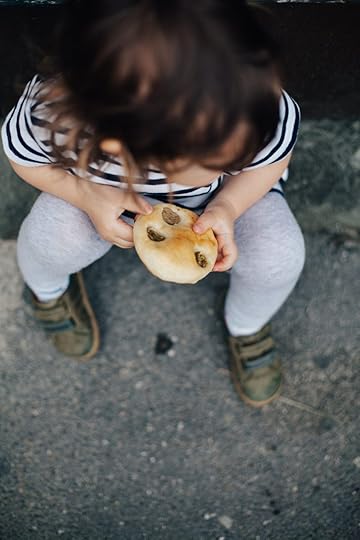
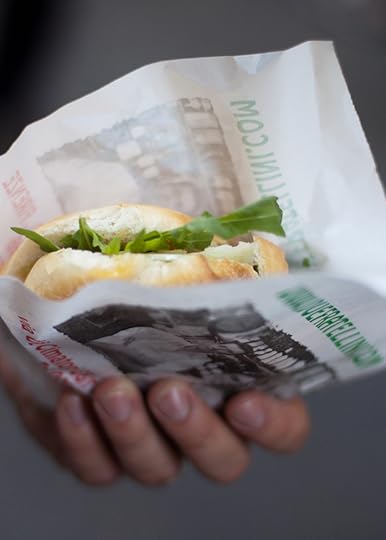 [image error]
[image error]
The point here (and what history can tell you too) is that there are plenty of other better choices because good panini is what Florence does so well.
The ritual is this: a small, round, crusty bun, sliced in half, with some of the fluffy, soft white bread pulled out to make room for the filling, which is never too much. One or two, maximum three, things go inside a Florentine panino. Creamy, unsalted butter and anchovies. Thin slices of prosciutto with a single layer of thickly sliced pecorino cheese. Truffled pecorino cheese and spicy, bouncy, fresh arugula. Creamy stracchino cheese, fennel-studded finocchiona and spicy grilled eggplant.
The bread may also be schiacciata (crunchy, wood-fired, olive oil-lathered focaccia) instead, or not too-thick slices of unsalted Tuscan bread. But the idea is something you can hold in two hands and finish in a handful of bites.
A glass of wine – a small, almost miniature serving of chianti or vermentino in a rounded glass, just enough for a few gulps – is the usual accompaniment, and most hole-in-the-wall paninoteche have a little shelf built into the wall that serves as a handy spot to place your glass so you can eat your panino with two hands while you stand on the street.
A panino al lampredotto, a bun filled with juicy boiled offal and salsa verde make up Florence’s favourite and most typical snack and these are served by lampredottai, lampredotto (abomasum tripe) sellers who boil the tripe in deep pots directly on the vans where the panini are sold and eaten.
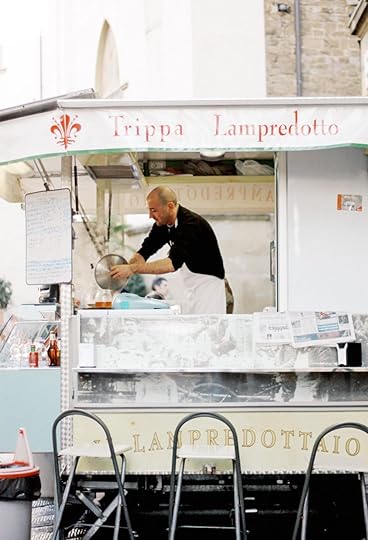
Florence has a centuries-long tradition of little places that serve wine and food. Even as far back as the Middle Ages, wine-selling was considered an “arte”, and the vinattieri formed one of Florence’s important guilds, setting up cellars and mescite, where you could buy wine or drink it right there. And you can still see along the back streets behind hefty palazzi the little “buchette di vino”, or wine doors, many dating to the seventeenth century, where wine was sold to the public.
The tradition of Florence’s many paninoteche dates back to the nineteenth century, where, along with glasses of wine, freshly baked bread from the forno (bakery) and prosciutto, finocchiona and salame from the salumaio came together in the simplest of ways for a quick lunch, an impromptu snack or merenda.
Places like I Due Fratellini, which is literally large enough to hold the two brothers, Michele and Armando and a wall of wine bottles, are doing what that paninoteca been doing since 1875. Another Florentine institution, the beautiful bar Procacci, which is famous for its fancy finger sandwiches filled with truffle paste, have been serving Florentines truffle-laced panini and pouring wine since 1885.
My personal favourite choices for a panino that are less than a 5 minute walk away from *that* long line at Antico Vinaio include ‘Ino right behind the Uffizi gallery in Via Georgeofili (here, you can also sit down and have a full glass of wine!). In the same area, Il Cernacchino (which inspired this panino with beef stew recipe in Florentine) also does great panini, I do love their porchetta sandwiches too. And just down the road on via dei Cerchi, another two favourites are I Buongustai (Via dei Cerchi 15r) — I adore their spinach and melted brie panini, they were my regular when I worked in a jewlery shop on this street! If they were too busy, I’d go next door to I Maledetti Toscani (Via dei Cerchi 19r). And right around the corner of course is I Due Fratellini (Via dei Cimatori 38r).
I never miss a panino (usually the fennel, orange and anchovy one) at Semel (Piazza Ghiberti 44) or a lampredotto panino at my favourite Tripperia Pollini, the tripe van parked near the church of Sant’Ambrogio, when I’m in the area of the market. And if I’m oltrarno side, I head straight to S.Forno (Via S.Monaca, 3r) and ask for a panino with mortadella, possibly sandwiched in a rosemary scented, raisin-studded pandiramerino.
If I’m not far from the train station, I sneak into Casa del Vino (Via del Ariento 16r). Their sausage and stracchino panino is something I dream of regularly. And whenever I can, if I’m in the area of Campo di Marte, the outskirts, not far from the train station or the football stadium, I go straight to place that I’m quite positive is the actual best panino in the city — Caffe Dogali (Viale Malta 5r).
Further reading: These photos come from my book Florentine (some are outtakes that never made it in!) and you’ll find a number of recipes n there inspired by these places, Procacci, Tripperia Pollini and I Buongustai for example. And I have a Florentine food guide available here.
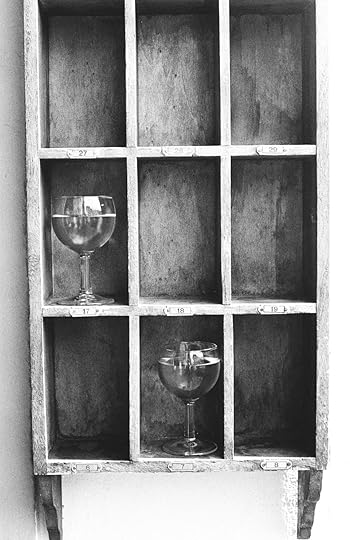
The post The 11 best panini in Florence that aren’t *that* panino first appeared on Emiko Davies.
September 30, 2021
An effortless flourless chocolate cake from Anna Tasca Lanza, Sicily
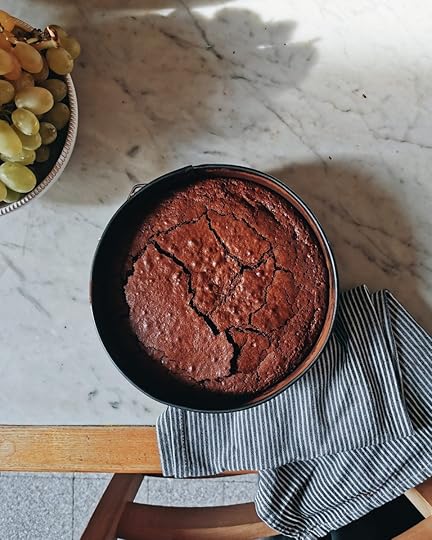
When I first walked into the kitchen of Fabrizia Lanza at Anna Tasca Lanza, you could smell the chocolate from outside. She was baking a flourless chocolate cake for dinner — a dinner which was like a warm embrace after all these months of not being able to meet or travel or get together, one of the most welcoming dinners that began with a comforting, steaming bowl of minestra di tenerumi (a minestrone made with the leaves and tendrils of the long cucuzza squash) and ended with this cake, a melt in the mouth flourless chocolate cake, served with simply whipped cream. I knew at first bite I needed to bring this to my kitchen repertoire.
We had arrived for the first opening of the cooking school since the pandemic, a week of celebrating the tomato harvest which is done, in Anna Tasca Lanza style, by making tomato extract and sun dried tomatoes and figs (below) in the hot Sicilian sun, which to this day is one of the most special activities I’ve ever been involved in doing.
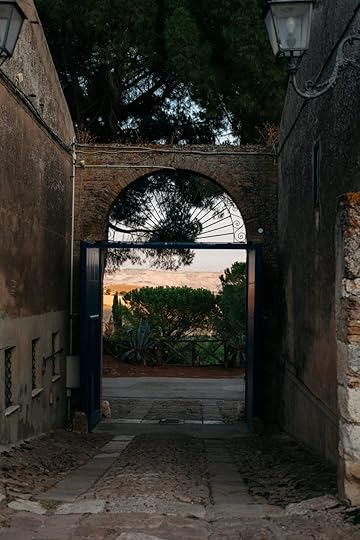
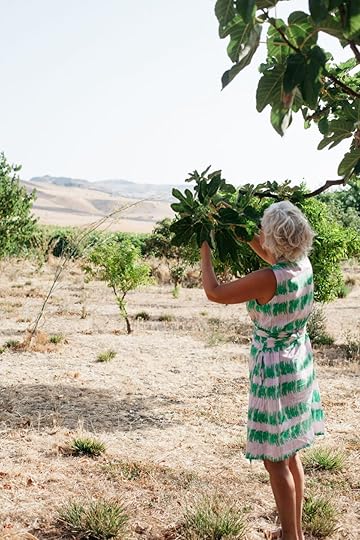
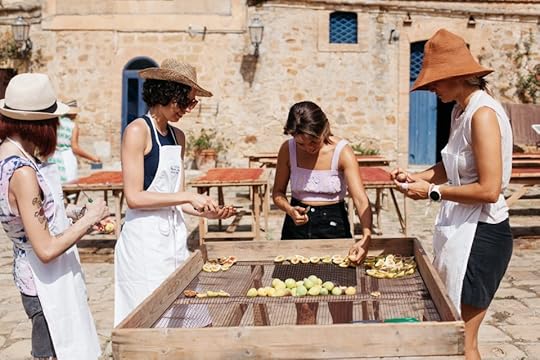
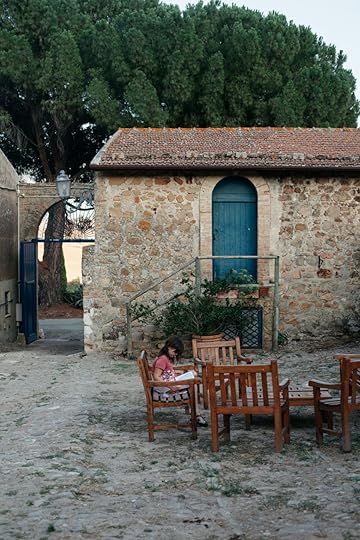
Fabrizia’s cake has very quickly become my favourite chocolate cake, which is saying a lot, especially when the cake it has just surpassed has been favourite for over a decade — I wrote all about it and its author, Elizabeth David back in 2011. David’s flourless chocolate cake from French Provincial Cooking is very, very good. And similar. It’s a tad smaller, proportions wise. And has a splash of black coffee, which is nice. But Fabrizia’s cake has something else. Maybe it’s the simplicity, one less ingredient — the almond meal — is honestly appealing to me (which is why I also love this chocolate cake, eggless and butterless, written a century ago by Ada Boni). It could be the texture — fudgy, melt in the mouth but not too rich, just perfect with some whipped cream or on its own. And that wonderful, delicate crackle on top.
Unfortunately I’m not the only one who loves that crackle on the top and the edges of the cake — Luna, 3, who helped me whip the cake (and incidentally caused me to be slightly distracted while doing so — I accidentally forgot to separate the eggs and whip them separately, turns out this in no way affects the cake, which is another bonus, one less bowl to wash up), instantly — in the blink of an eye — stuck her fingers in the top of the cake! Then, quick as a fox, snuck a piece out of the side of the cake! So I didn’t take the photographs I thought I would get from this, but I think you can understand, even with the gouges (see the last photo), how good this cake is.
By the way, I’ll be hosting a September Harvest workshop at Anna Tasca Lanza, 5-10 September, 2022. See their calendar for more information! And don’t forget to sign up to my newsletter, Notes from my Kitchen, if you want to always be in the loop about workshops like these, plus receive recipes, food essays and tips on food writing or food photography.
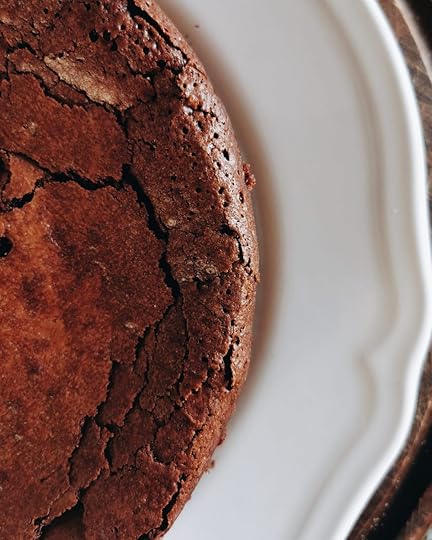
Fabriza’s Torta al Cioccolato
I use very slightly less sugar (30 grams less) than the original and have found accidentally that separating the eggs is not so important but if you accidentally do this, give the eggs an extra good whipping so they are spectacularly fluffy. Otherwise this is just as Fabrizia gave it to me.
120 grams butter, plus some more for greasing the pan
cocoa powder, for dusting pan
200 grams dark chocolate (I used 70% cocoa)
4 eggs, separated (or not, if you forget…)
150 grams sugar
pinch of salt
Heat oven to 160C (320F). Heavily butter a 10-inch springform pan and dust with cocoa powder. Over a double boiler, melt together the butter and dark chocolate, whisking until combined. Remove from heat, allow to cool slightly. Beat egg yolks and sugar together until a ribbon forms, then add the chocolate to the egg mixture. In a separate bowl, beat egg whites to stiff peaks with a pinch of salt and gently fold in to the chocolate mixture until well incorporated. Scrape batter into prepared pan. Bake 25-30 minutes, until the sides just start to pull away and the top begins to crack. Allow to cool completely. Release the springform ring, run a knife under the cake and move to a serving platter. Dust with more cocoa powder — and keep away from 3 year olds.
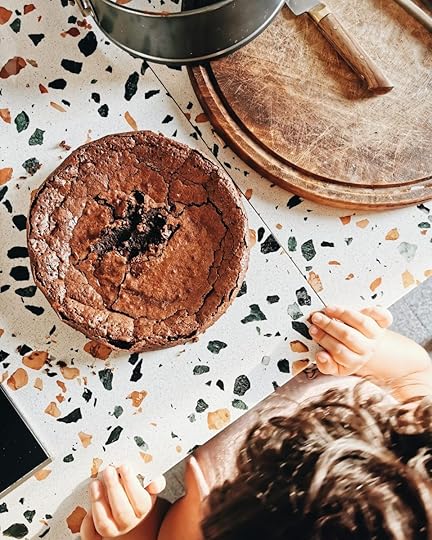
The post An effortless flourless chocolate cake from Anna Tasca Lanza, Sicily first appeared on Emiko Davies.
August 29, 2021
Tomato paste making at Anna Tasca Lanza, Sicily
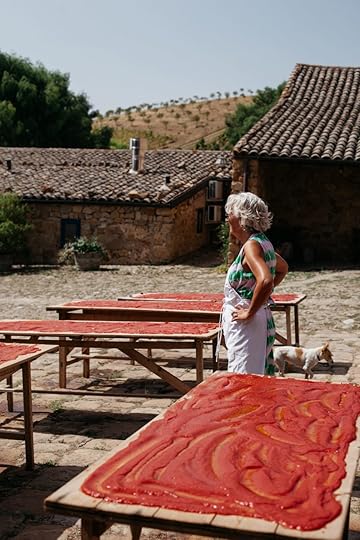 It began with 120 kg of tomatoes. Six huge boxes of small, somewhat oval tomatoes of a Sicilian variety called siccagno, from the word secco, dry. They’re grown in tiny bushes, low to the ground, without any water at all. When you cut them open they’re just flesh, no juice, and deep, deep red. They taste almost savoury, as if they’ve been sprinkled with salt. Intensely tomato-y.
It began with 120 kg of tomatoes. Six huge boxes of small, somewhat oval tomatoes of a Sicilian variety called siccagno, from the word secco, dry. They’re grown in tiny bushes, low to the ground, without any water at all. When you cut them open they’re just flesh, no juice, and deep, deep red. They taste almost savoury, as if they’ve been sprinkled with salt. Intensely tomato-y.
It’s late August and I’ve arrived (with my special little helper) at Anna Tasca Lanza cooking school , a mecca for food lovers and farm to table cooking (the likes of Alice Waters and Grant Achatz have come here, searching for inspiration) in rural, central Sicily. It hasn’t rained since May and the empty, scorched golden hills that we’ve been watching grow since leaving Palermo two hours ago are bone dry. Case Vecchie, the school’s home, led by Fabrizia Lanza in her mother Anna’s footsteps, is like an oasis among the hills — orchards, vegetable gardens, vineyards, hens, a deep, refreshing pool and the deep blue windows and doors lining the stone courtyard are a heavenly sight.
We’ve come to make astrattu or estratto, tomato paste, for the school’s inaugural Tomato Week, a highlight of their program and one of the first gatherings they’ve had since the pandemic began. I always knew I was going to love this but I wasn’t prepared for how deeply these four days would penetrate my whole being. That might sounds over the top but somehow the very act of chopping, stirring, mixing, checking, eating and talking with a group of eight like-minded women was just the balm I needed with all the negative things going on in the world. Tomato paste made the ancient way, using the sun and wind and time, needs care, patience and community. It was a grounding and entirely inspiring experience.
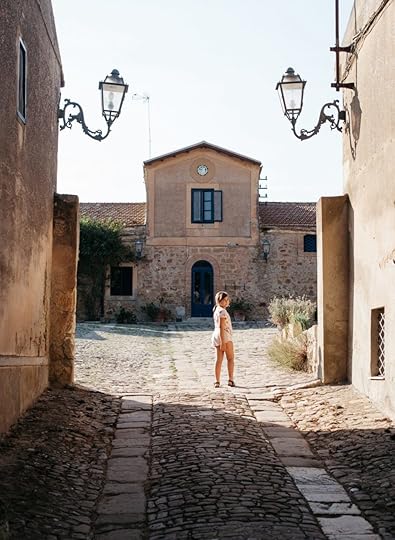
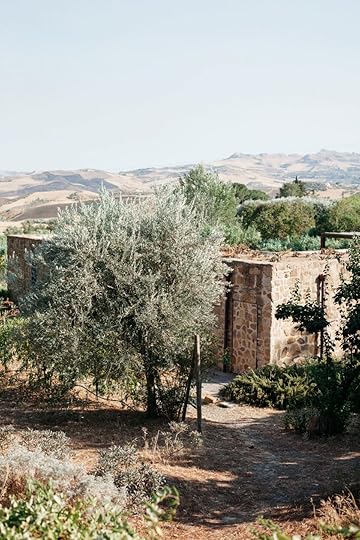
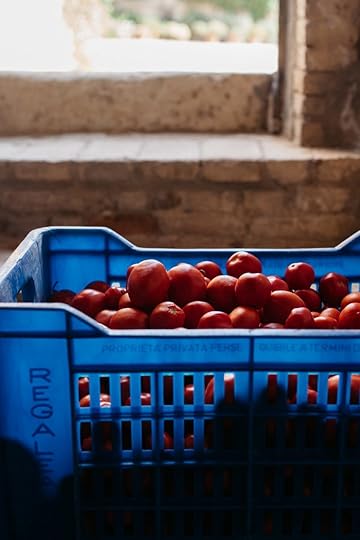
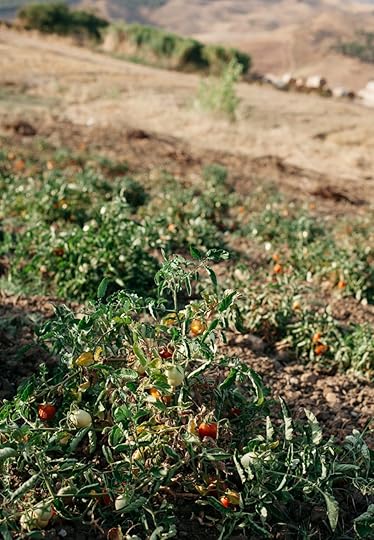
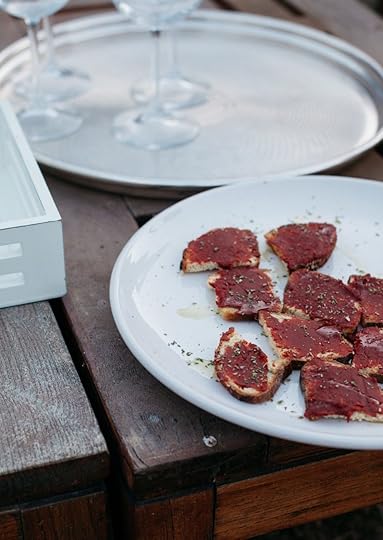
Fabrizia put us to work right away, we spent more than 2 hours chopping tomatoes, then put them to boil with onion, garlic and bay leaf until the pulp gave away completely. An electric passaverdura helped us turn the pulp into juice, spitting out the seeds and skins much like a hand-cranked passaverdura does. The 120 kg of fresh tomato becomes about 70 litres of this pulpy juice. To this, 900 grams of salt is added. Then, out in the hot sun, we poured the juice onto eight large wooden tables set in the protected stone courtyard. They dripped for a day, being carefully checked every 30 minutes or so, the solids settling on the wood, the water dripping off as it should, until we could move the extract onto just four tables. The sun beat down relentlessly on the backs of our necks while we stirred and checked the paste or sliced tomatoes and figs to sun dry on a large rack.
At night, we brought the tables inside, and in the warm morning sun, they came back out again. Soon, we could scrape the extract onto two tables, with more checking, and stirring to allow the crust that had formed on top move to the bottom and the softer, wetter tomato paste to move to the top and finally, it was just one table. We moved from spoons to dough scrapers, and the tomato paste grew denser, darker, deeper red — the smell was unbelievable — tasting so intense, almost candied.
At the end of the third day, we were able to place that last remaining table of tomato paste into a large basin — reduced to about six kilograms now — and then it goes in the shade, inside, and for the first time, covered, to settle until it was solid enough to roll into balls with oiled hands and be placed in glass jars for that taste of Sicilian sunshine throughout the year.
This extract is so good you could eat it by the spoonful, or spread onto crostini of Fabrizia’s homemade bread, sprinkled with some dried oregano and a bit of olive oil. But otherwise you would add it to soup, sauces or stews.
We also made salsa pronta, or bottled tomato sauce, ready to use or “pronta” for a taste of summer all year round. “They come from the same mother,” explains Fabrizia of the tomato paste and the salsa pronta, “But one comes with a dowry of a lot salt — precious salt — and the other with a dowry of basil, garlic and olive oil.”
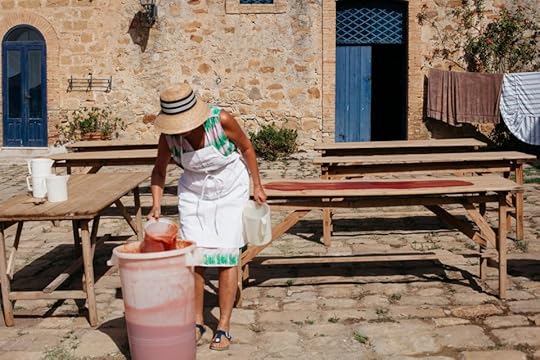
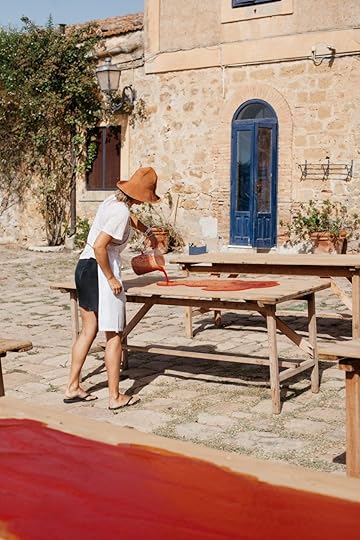
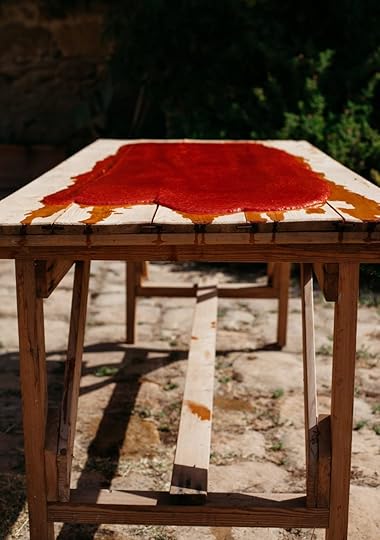
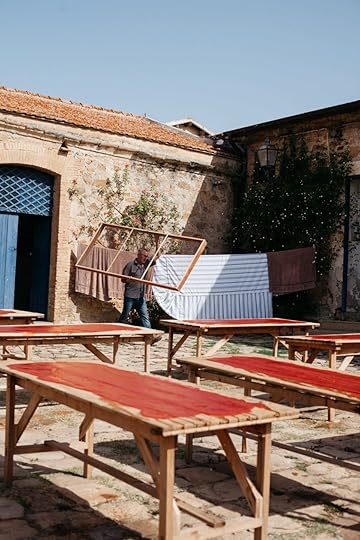
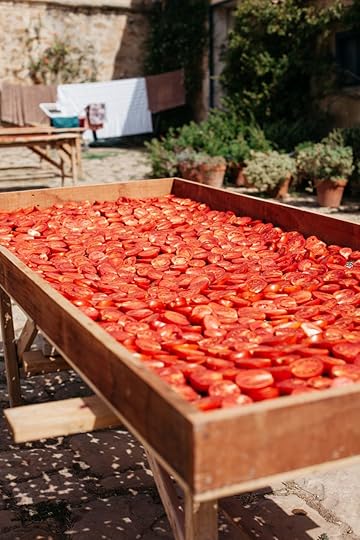
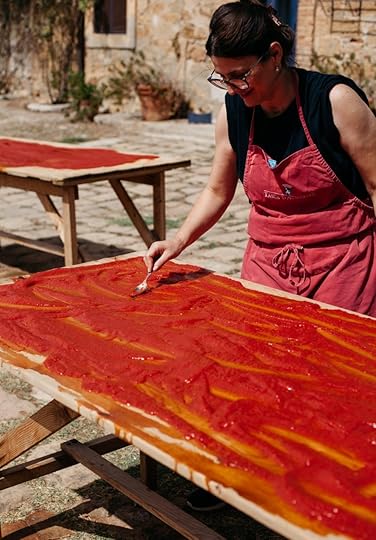
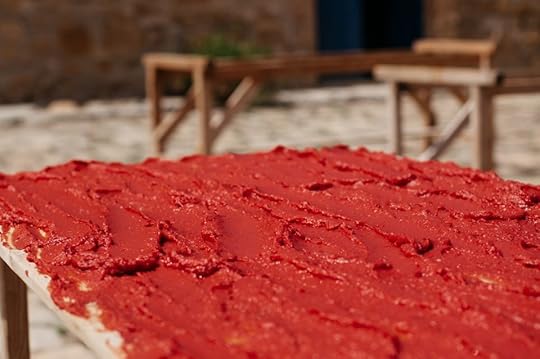
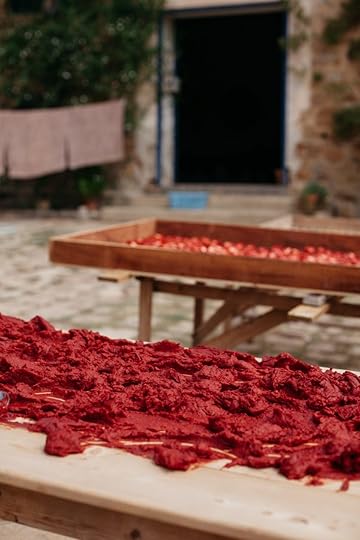
We made many more delicious things while we were waiting for the sun and wind to do their thing.
We picked figs from the dry, crunchy, sunburnt orchard and we made jam, the creamiest fig sorbet and I contributed a little bit of Tuscan flavour with a schiacciata all’uva made with both grapes and sliced figs. One day Fabrizia made us her gelo di mellone, an absolutely delicious watermelon jelly that was such a treat — I have never tasted a watermelon quite like the ones grown at Case Vecchie. We also made cavatelli with the Case Vecchie durum wheat, and eaten with homegrown almonds and sage, blended into a pesto. Roast pork with mint and garlic. Casatelle — ricotta stuffed into a deceptively thin pastry of ancient grain flour, olive oil and white wine, deep fried and dusted in cinnamon and sugar. Oh and the most wonderful involtini di carne, basically a way to make a tiny bit of meat stretch far, made delicious with breadcrumbs, corinto currants which we had dried in the courtyard and patiently picked off their stems, pistachio and more. When it was too hot to cook, or eat, or even sit in the kitchen, we retreated to the glorious swimming pool with ice cold drinks until the afternoon sun faded a little.
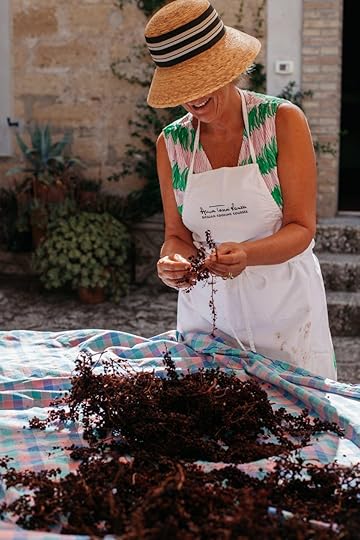
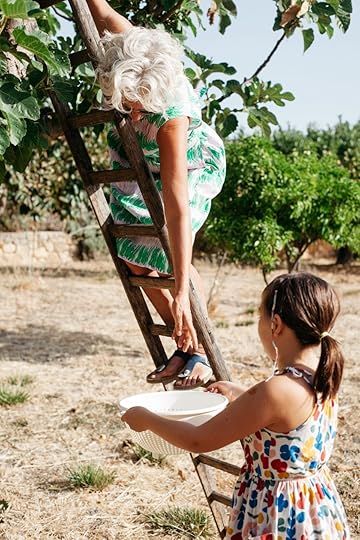
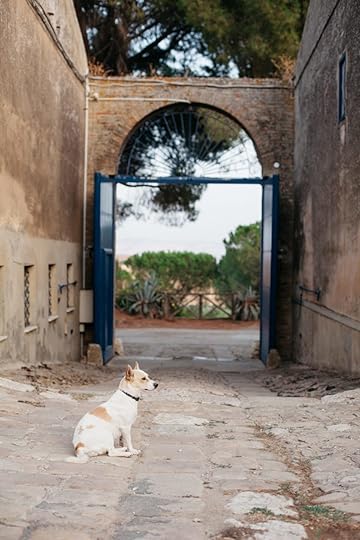
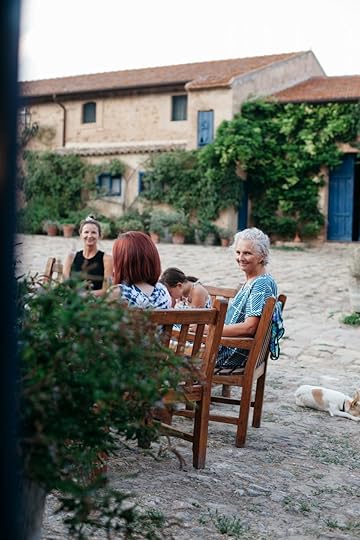
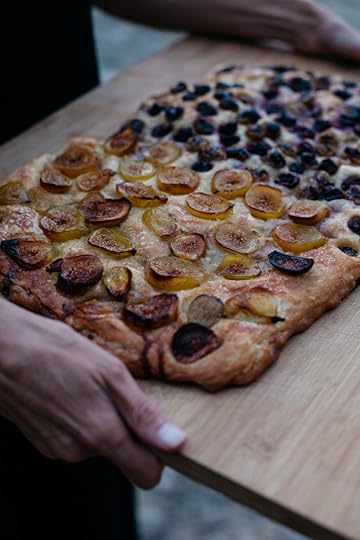
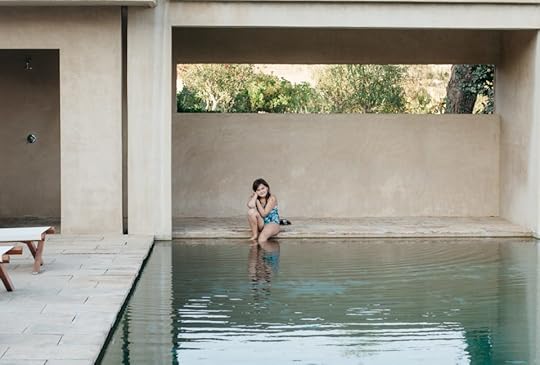
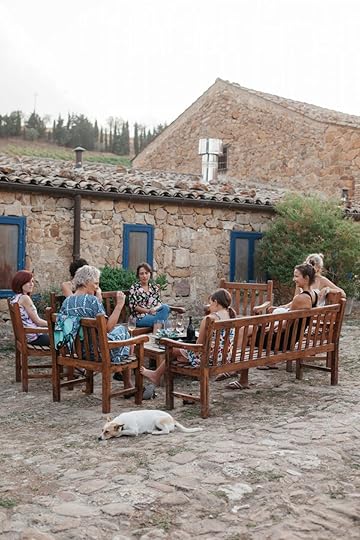
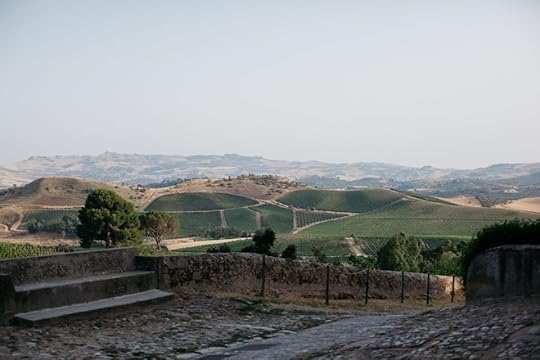
The evening aperitivo sitting in the courtyard was so delightful that we decided that our favourite way to do dinner was in the same place, buffet style, taking plates on our laps and eating in the cooled courtyard with a bottle of wine and plenty of (good, relevant, inspiring) conversation. I might miss those evenings even more than the delicious food.
It was more than a cooking class, more than I had hoped for. It was an inspiration, it was a balm. It was meditative and the connections that were made around that kitchen and that protected/protective courtyard is something I will treasure. I can’t wait to come back next year to host my own workshop there — it will be the week of 5-11 September — and it will be along the same line as Fabrizia’s philosophy, using the bounty of the summer, slow cooking, using our hands and making the most of what we have. We will hopefully visit a local ceramicist and the local cheesemaker for that delicious ricotta. If you’re interested in knowing more about it or booking, send an email to info@annatascalanza.com.
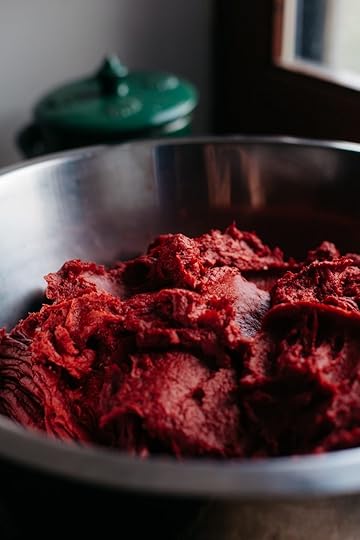
The post Tomato paste making at Anna Tasca Lanza, Sicily first appeared on Emiko Davies.
August 15, 2021
Riccardo’s Lost Recipe – Torta con i ciccioli

I was dropping in on Marco’s aunt and uncle, Franca and Riccardo a few years ago. We let ourselves in through the gate, attempting not to let Asia, the giant Maremma sheepdog, escape, and slipping into the house where, behind several piles of books, Riccardo was printing out a short story to share with me. It’s about cake; he thought I would like it.
It was a cake often made by Nonna Maria, a farmer’s daughter from the countryside near Pisa, and a baker. The cake pervades Riccardo’s memory like a ghost. He remembers the smell, the taste, the month of the year – she made it in November, a month of cold, short, rainy days, during a festive season when the fair would come to town. He remembers it as “una bomba” – of calories, that is. A very dense, short cake, heavy with eggs and lard (olive oil and butter were luxuries). It was eaten it around the fire, one piece devoured after another.
Riccardo had spent years searching for this recipe, based entirely on the memory of eating it when he was young. At first we thought it might be like a sort of Florentine schiacciata alla fiorentina, a fluffy, yeasted cake typical of Florence, made exclusively during the Carnival period in February (already that made raised my doubts), heady with the aromas of orange zest and vanilla and enriched with lard. I made it for him to try, but it was too fluffy, too perfumed, too dainty with its veil of powdered sugar and cocoa powder, to be the one.
“It’s more rustic,” Riccardo said.
“And more dense, much more dense,” Franca piped up.
They got married when they were both 17 years old. They have been together for over sixty years and have three great-grandchildren. Even Franca remembers this cake. In fact, although it’s Riccardo’s memory, Franca is a great cook, and she knows cakes, so I listen to her recollection of it too and in particular to a detail that Riccardo doesn’t mention.
“There were ciccioli in it,” she assures me, speaking of savoury, crunchy, porky bits scattered throughout the cake.
Ciccioli are small, dry pieces of fatty pork, cooked slowly until dry and all the fat has melted out of them – this part is then drained for making lard. They are at times spiced or salted, but at their simplest, left plain and unseasoned. To the cake, they lend crunch. Similar to pork scratchings, they can be eaten as is as a rather addictive snack, but it’s more traditionally found sprinkled through polenta, bread or, in this case, cake.
I didn’t have to look very far for inspiration – Pellegrino Artusi has a recipe in his nineteenth century cookbook for focaccia coi siccioli (ciccioli). And although he calls it a focaccia, it’s not a bread but actually a sweet, very dense, flat cake. It may sound strange, but the sweet-savoury result is much like wonderful effect of having pancakes with maple syrup and crispy bacon, though much more subtle. It’s a country cake has that has a comforting, satisfying quality worthy of cherishing as a memory for a lifetime.
________________________
In memory of Riccardo Cardellicchio (3 May 1939-14 August 2021), a brilliant journalist, author of stories, poems and plays, and at one time the cultural assessor of Fucecchio. I couldn’t have written Tortellini at Midnight without him. Partly, it was for the initial research, like for this recipe, and other details which he remembered better than my mother in law did, being her older brother by 7 years. But then his health deteriorated quickly and he could no longer communicate with me, and he has spent the past couple of years lucid but trapped in a body that would not allow him to talk or move. Later, it was one of his books, Il Pozzo di Muscioro, where he recounts some of the stories of his Nonna Anna (here, her famous polpette), my children’s great-great-grandmother, who ran away with the postman, that helped me finish my cookbook. Grazie Riccardo.
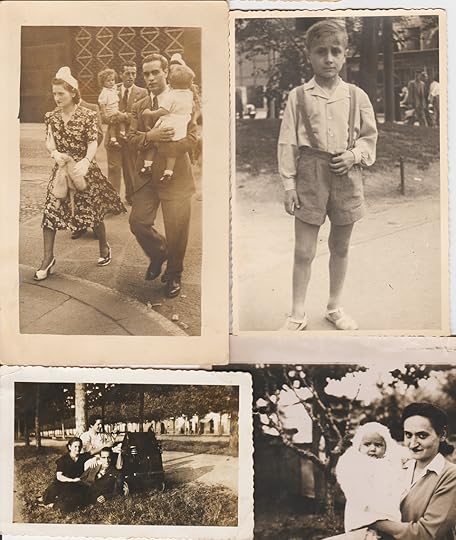
Torta con i ciccioli di Nonna Maria
(Nonna Maria’s lard cake)
200 grams sugar
150 grams softened butter
60 grams of softened lard
2 whole eggs
2 egg yolks
500 grams flour
60 ml vin santo (or white wine, rum or Marsala)
zest of 1 lemon or orange
150 grams of ciccioli (unseasoned, deep fried pork fat pieces), finely chopped
powdered sugar, for serving
Cream together the sugar, butter and lard. Add the eggs and yolks one at a time until well incorporated. Mix in the flour and, once smooth, the wine, followed by the zest and the ciccioli pieces. Stir until just combined. Spread out the mixture onto a rectangular tin (such as a brownie pan) lined with baking paper. Bake at 180ºC for approximately 45 minutes or until deep golden brown on top and springy in the middle. Cut into squares and serve dusted in powdered sugar.
_______________
This cake photograph is by Lauren Bamford, styled by Deb Kaloper for my cookbook, Tortellini at Midnight, where this extract is also from. The black and white photographs are of young Riccardo with his parents Lina and Mario in Turin, where they lived until moving to Tuscany during the Second World War.
The post Riccardo’s Lost Recipe – Torta con i ciccioli first appeared on Emiko Davies.
August 1, 2021
An idea for a cherry semifreddo
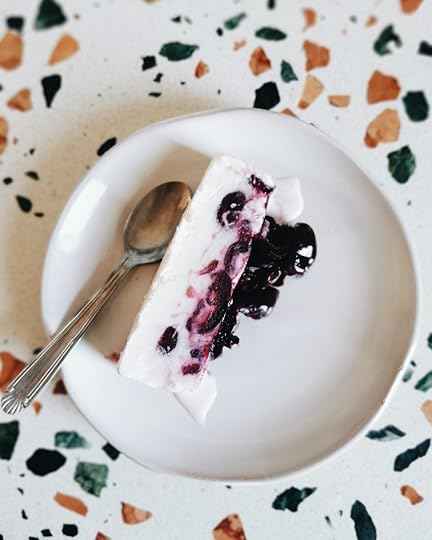
Ever since losing my ice cream maker (I lent it to a friend who put it in the dishwasher — never do that!), homemade semifreddi and granita have taken over as my go-to summer desserts when it is truly unthinkable to turn on the oven. The beauty of making semifreddo, which usually has a base of pure whipped cream, whipped egg whites (an Italian meringue) or both is that you can flavour it with whatever you like — I’ve used it with some abundant seasonal fruit that we had too much of, but you could also add (or replace with) liqueurs, coffee, chocolate in any form, nuts, or even nougat.
Here you can find my gianduia semifreddo with chocolate and hazelnuts for Food52, and here there is a version I wrote about for Marcella Hazan’s stracciatella semifreddo (like a chocolate chip) for Corriere della Sera and there is also this simple semifreddo with honey and berries for Good Food Australia. I also have an easy chocolate semifreddo in my dessert cookbook, Torta della Nonna.
Italian semifreddo is often compared to French parfait. But true Italian semifreddo is made by folding whipped cream into Italian meringue (which is where the egg whites are whipped with boiling hot sugar syrup, which cooks them and stabilises them). The whipping is vital as it creates air, making a creamy semifreddo that you don’t need to churn. It’s almost like a frozen mousse.
Some semifreddi are made with even simpler methods, like whipping melted chocolate and cream until fluffy and then freezing it and this really appealed to me because, well to be perfectly honest, in the heat we are having here I just felt like doing as little possible!
So this is a bit of an experiment because unlike the semifreddi I usually make with meringue, this one is just barely sweetened whipped cream, a little yogurt for acidity and cherries.
I always quote Marcella when talking about semifreddi because when she said in an interview in 1987 with the New York Times, “Everyone can invent one,” she was perfectly right.
My best tips for making semifreddo: Use very cold cream — some even like to put the bowl and the beaters for whipping the cream in the fridge to chill too. And if you are using a meringue, use room temperature egg whites for the best whipping. Equally important is to be careful to not over-whip – both the cream and (if using) meringue for semifreddo should be whipped to soft and fluffy peaks, but not stiff, firm peaks otherwise the resulting semifreddo can have a crumbly texture rather than a creamy one.
On the right container to freeze it in: A loaf pan or something rectangular and long is ideal. Rectangular is traditional only because it makes it easy to cut into slices to serve. But for a different look, you could use a round mould and cut into slices like cake – pudding moulds and bundt pans make pretty semifreddi. You can even make individual semifreddi in small teacups or ramekins. I used my daughter’s lunch box as it already has a handy lid!
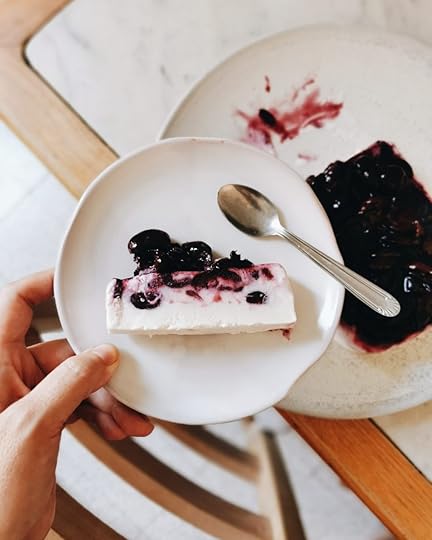
Cherry semifreddo
This makes enough for 8 slices, and you could halve this if you wanted but the question would be finding the right sized container to freeze it in so they are nice thick slices. Remember that the good thing about semifreddo is it keeps very well in the freezer.
400 grams of cherries
375 ml (1 1/2 cups) chilled cream
4 tablespoons of fine sugar
60 ml or so (1/4 cup) of thick natural yogurt
Pit the cherries (if you don’t have a cherry pitter, just cut them in half, and remove the pips after they are cooked and cooled, it’s a bit messy but easy) and place them in a saucepan with half of the sugar and a splash of water. Heat gently until they begin releasing juice and simmering, and stir occasionally, adding water as needed so that the fruit cooks in its own juices. It should take about 15 minutes. Let cool completely.
Whip the cream in a chilled bowl. When it starts to thicken, add the rest of the sugar until incorporated. Stop whipping when the cream begins to hold peaks. Stir in the yogurt.
Pour half of the cherries in to the bottom of the pan and then cover with the cream mixture. Let it freeze 4-5 hours or overnight. Turn the semifreddo over onto a serving plate and cut into thick slices. Spoon over the rest of the cherries. Semifreddo is really at its best when you let it sit for about 10 minutes or so (well in this heat 5 was enough) for the semifreddo to soften — it should be “half” frozen, as its name suggests, which is a lovely spot between frozen and melting when it is still chilled but very creamy.
I discovered that this happens to be absolutely delightful when served over the top of a brownie or flourless chocolate cake like torta caprese!
The post An idea for a cherry semifreddo first appeared on Emiko Davies.
July 15, 2021
Fish soup on Giglio Island
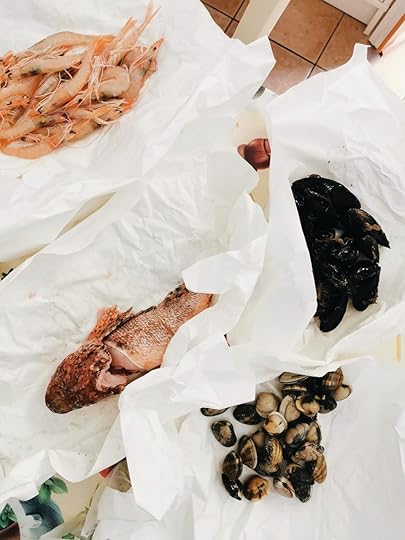 We spent a week in our favourite holiday place, the very special Giglio island, a tiny island in Southern Tuscany that can only be reached by ferry from Porto Santo Stefano. It’s the kind of place where time slows down and there is a simplicity to the rhythm of the days when you’re on an island like this so we really slow down when we are here (especially in a spot like Pardini’s Hermitage, where we stayed one year).
We spent a week in our favourite holiday place, the very special Giglio island, a tiny island in Southern Tuscany that can only be reached by ferry from Porto Santo Stefano. It’s the kind of place where time slows down and there is a simplicity to the rhythm of the days when you’re on an island like this so we really slow down when we are here (especially in a spot like Pardini’s Hermitage, where we stayed one year).
One of the things I love most about being in a place that isn’t home is tasting all the typical things or local produce that you don’t get anywhere else. Here on Giglio, that means things like fist sized jammy figs unlike any that I’ve tasted before, tiny, sweet yellow plums, apricots that taste like sunshine and tonnina, which is a unique salted tuna preparation. Once you desalt it, you combine it with some aromatics like bay leaf and chilli peppers and put it under oil – it is so delicious on sandwiches or in salad, much like how you’d use tinned tuna but turbo charged with flavour and with an almost stringy texture. For sweet tooths, there is also panficato, a figgy, chocolately dense bun of goodness, said to be related to the Sienese panforte.
The other thing I can’t resist here is the fresh seafood. The variety of fish and shellfish from the Tuscan archipelago is so wonderful and to get it so fresh from the passing fish trucks from the Porto Santo Stefano Fishing Co-op that park next to the beach at Campese (or up in the main piazza outside the walls of Castello or by the port) is such a treat. You’ll hear them coming with their megaphone announcing their arrival to beachgoers! There’s also a larger van on Fridays at the little weekly market in Campese.

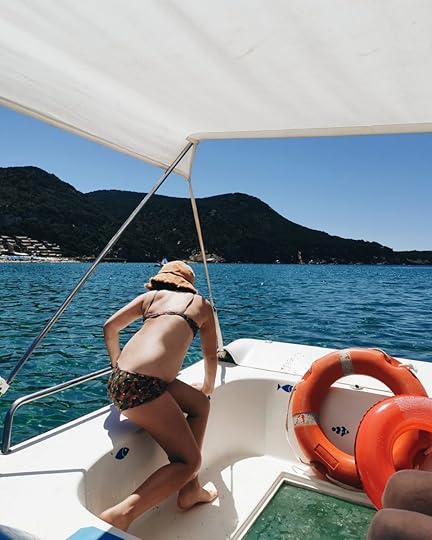
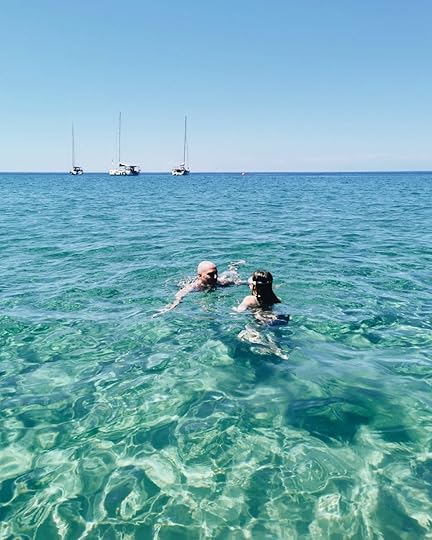
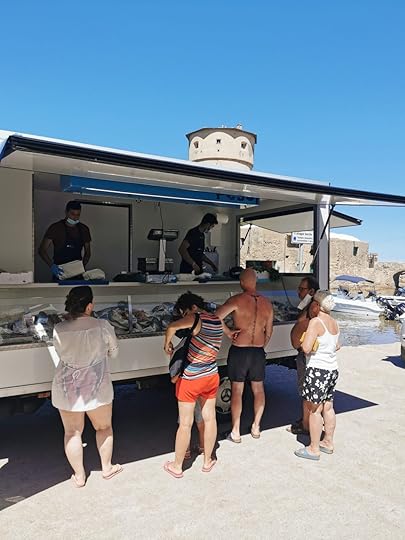
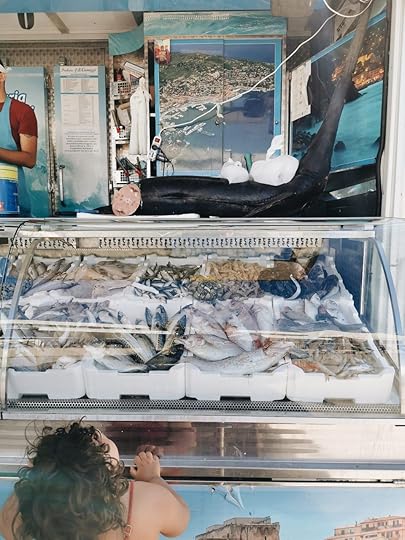
One particular day, Marco went to see what was on offer. I had my eye on the baby calamari but the man in front of us took them all with one fell swoop. Marco ended up with a small scorpion fish, a bag full of mussels still with their beards and barnacles slinging to them, a bag of proper vongole veraci (you can tell them from other varieties that are often passed as vongole veraci as they have two siphons not one), and two big handfuls of beautiful pink prawns, all caught between here and Monte Argentario. A fish soup was in order.
This is more a broth with chunky fish pieces, rather than a thicker soup. Vital are thick pieces of bread toasted, then rubbed with a garlic clove, to dunk in the broth. Have extras. Also important is to have whole fish – it doesn’t have to be scorpion fish, any white fish will do (just don’t use oily fish like bonito, mackerel or sardines, they are my favourite fish in general but for soup they can be too bitter), and in fact in Italy they often have a basket of “pesce da zuppa” on offer, which are small fish that are really too small for any other preparations other than frying them whole or throwing them directly into a pot for soup. The whole fish adds so much more flavour to the dish than just fillet, add do the prawn shells. Don’t waste those either!
If you have any leftovers – which we did as this makes a really generous amount for four – you can pass the fish through a passatutto or a mouli, and reduce the broth a little or add a touch of tomato passata, then cook some short pasta in it for a satisfying, brothy pasta. If you need to pump it up a bit to spread it out, add a small tin of cooked cannellini beans or chickpeas.
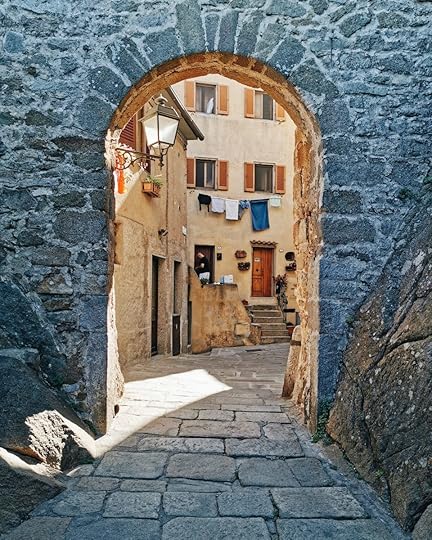
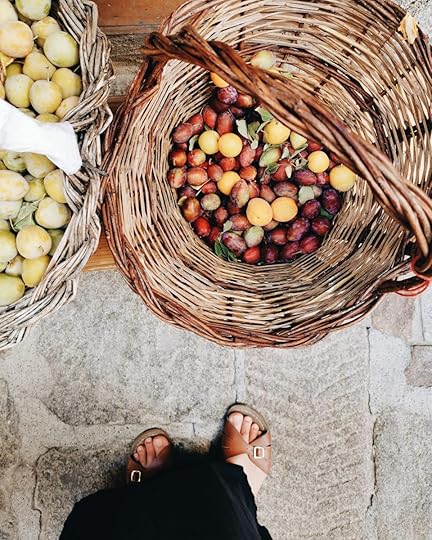
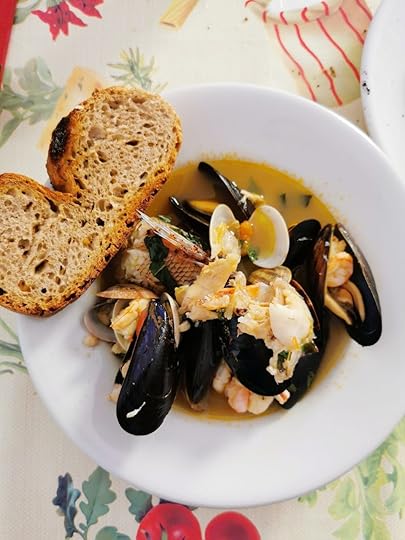
Brodetto di pesce di Marco
Marco’s Giglio island fish soup
Note: Marco likes scorpion fish (scorfano), chopped into large pieces, which the fishmonger can do for you if you like. You could also use a handful of small whole fish, or opt for other white fish like tub gurnard (gallinella). The key is that they are whole, for more flavour, and white fish rather than oily fish. To clean the mussels, make sure to pull out their beards and give them a scrub if they are as fresh as Giglio island ones! Store bought are probably already cleaned and ready to go. For the clams, see this post on a very detailed description of how to purge clams properly.
For 4 people
400 g of whole fresh prawns
2 cloves of garlic, peeled and squashed with the side of a knife
2 tablespoons extra virgin olive oil
10 cherry tomatoes, halved
Handful of chopped fresh parsley or basil (save the stalks)
500 g whole white fish such as scorpion fish or tub gurnard
2 glasses of white wine
1 small dried or fresh chilli
500 g mixed (cleaned) mussels and (purged) vongole clams
Juice of half a lemon
Toasted bread rubbed with a garlic clove for serving
Remove the heads and shells of the prawns and set the flesh aside. Place the heads and shells in a frying pan with the garlic and cook over medium heat until the shells are toasted and the garlic is lightly browned.
Add the tomatoes and the stalks of the herbs, and season with a good pinch of salt and some freshly cracked pepper and cook for 5 minutes, then add the white wine. Keep simmering and when reduced a little, add enough water to cover, add the chilli and let the broth cook for 20-30 minutes.
At this point you have two options. Option 1: pass the broth through a passatutto (mouli) for a smooth, slightly thicker (and less fiddly to eat) soup, or option 2: simply strain and remove only the shells and the head of the prawns, putting back the tomato and garlic in the pan (we chose the latter here).
Whichever you choose, now bring the broth back to a simmer, add the whole fish pieces and cook for 2 minutes, then the clam and mussels, cook until they open, which should only take a couple of minutes at most, and at the last minute add the prawns. Adjust for seasoning with salt, pepper if needed, and the lemon juice. Sprinkle over the fresh herbs.
Serve the soup with plenty of toasted bread rubbed with a clove of garlic. An absolutely stunning and delicious dish, which we washed down with a precious amber glass of ansonaca from Francesco Carfagna’s wild, Altura vineyard on the southern side of the island.
P.S. If you like fish soup, you might like to check out this unusual Tuscan soup, zuppa corsa.
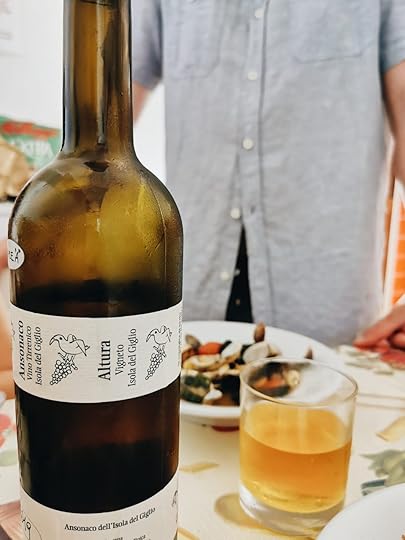
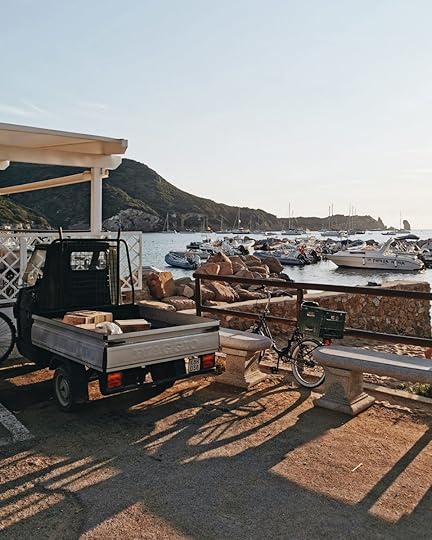
July 2, 2021
Annoucing a family gathering in Pienza with Quartier Collective
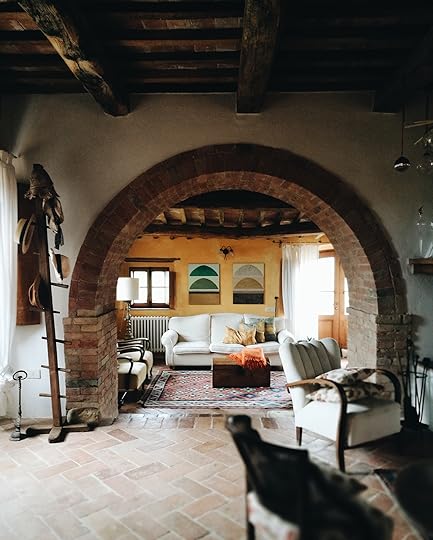
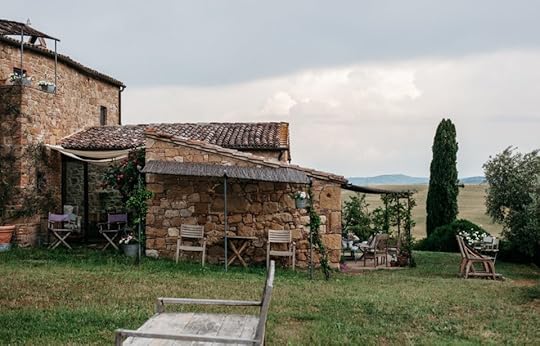 I’m so pleased to announce this family-friendly gathering — which is open to anyone who is curious, wants to make a connection, enjoys slow travel, good food, good wine and good company — together with our friends Martin and Taryn of Quartier Collective.
I’m so pleased to announce this family-friendly gathering — which is open to anyone who is curious, wants to make a connection, enjoys slow travel, good food, good wine and good company — together with our friends Martin and Taryn of Quartier Collective.
We will spend 5 nights together, from 11-16 October 2021, in the blissful Villa Pienza, which has a 360 degree view of the Valdorcia countryside. Activities are planned each day, but there is also plenty of time to relax and enjoy the villa, which is a beautifully restored Tuscan farmhouse with a heated saltwater pool, yoga studio, hammocks, cosy communal living rooms and billiard room. We will show you our favourite artisans and organic produce in the area and go truffle hunting, wine tasting, visit hot springs, pet farm animals, taste the best pecorino cheese, as well as visiting some of the most charming medieval towns in the area. Most evenings we will be relaxing at the villa, making and enjoying dinner together.
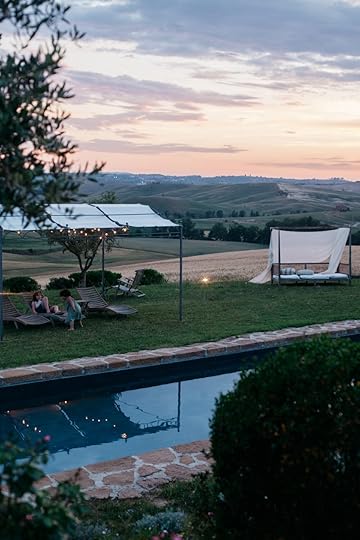
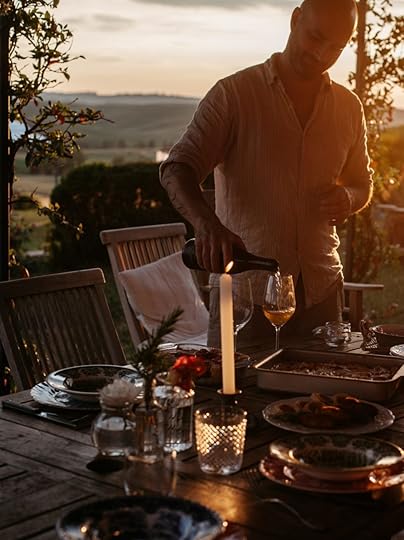
Our days will look a little like this:
Day 1: Afternoon arrival and welcome drinks. Long table dinner at the villa.
Day 2: After breakfast, we set out for a truffle hunt in the woods on the property of a wonderful organic farm and one of the best Pecorino di Pienza cheese producers in the area. This unique landscape known as the Crete Senesi is known for both white truffles and black truffles. With our truffle hunter and his dog hopefully we will find some of the prized white ones at this time of the year, then we’ll sit down for lunch where we can also taste the cheeses and a truffle meal.
After lunch, time to relax at the villa and anyone who would like to help make dinner is welcome to join in making fresh pici pasta with Emiko, the most well-known pasta dish of the Valdorcia, which can be served all’aglione (a garlic and tomato sauce) or cacio e pepe (with pecorino cheese and pepper). Marco will be opening some wines and can take the grown ups through an informal tasting of wines from the area. Dinner at the villa of antipasti, pasta, dessert and wine.
Day 3: After a late breakfast and morning spent at the villa (maybe time for some yoga in the studio or a swim in the heated pool), we will visit an organic producer of ancient grains and their mill, where they make pasta everyday. We will also stop here for a light lunch too, for a taste of local specialties.
After lunch we will visit Bagno Vignoni, a charming medieval hamlet famous for its curative hot springs since the times of Catherine of Siena. These hot springs are the hottest in Tuscany and have volcanic origins from about 1000 meters below the surface and anyone can visit them in the pools of the village’s two hotels or by walking down the hillside to the ancient Parco del Mulino (park of the mills), where there is a slightly cooler natural pool. We will have free time here to explore this beautiful village. You can relax in one of the cafes and stroll around, or go for a swim at one of the town’s thermal pools (an entry fee of around 22 euro for half day) or come for a mini trek down the hillside to the natural one, a short but steep 5 minute walk. We will have dinner in a wonderful trattoria here.
Day 4: Today after breakfast we can go exploring some of the Val d’Orcia and its towns and other beautiful gems like the Vitaleta Chapel and the town of San Quirico d’Orcia, which has a beautiful garden called Horti Leone which was constructed in the Renaissance (they say it was designed by Michelangelo) as a public resting stop for those on the pilgrim route.
Lunch and siesta back at the villa, then in the afternoon we will stop in at Montepulciano, a historic hilltop town enclosed in a 14th century wall, there’s a wonderful historic cafe here for some refreshments, then we will visit a flower farm where we can pick flowers, make a small posy or wreath and have aperitivo in the beautiful panoramic garden before heading back to the villa for pizza night.
Day 5: A slow breakfast before a visit to a winery and organic farm that produces beer, wine and honey (and they also have a collection of cute farm animals and a picturesque view of Pienza). We will have lunch here at their food truck with a natural wine tasting too, before heading finally to Pienza, the “ideal” Renaissance city: great views, great gelato, cheese shops, beautiful piazza and a good spot for aperitivo with a view. After an initial walk to the best gelateria in town get your bearings, we will have free time here to explore the wonderful shops and little streets. For the kids, there will be a one hour workshop in a little studio and shop of all things made with recycled materials. We can meet on the wall for aperitivo before heading back to the villa for our last dinner together.
Day 6: Our last breakfast together and goodbyes.
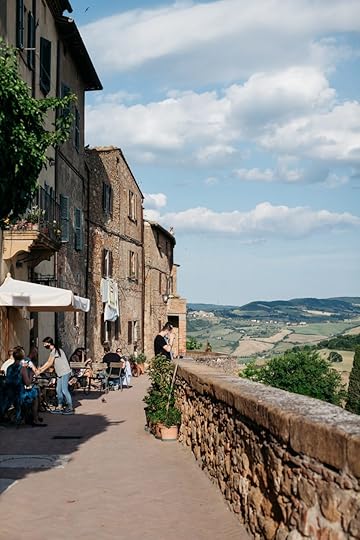
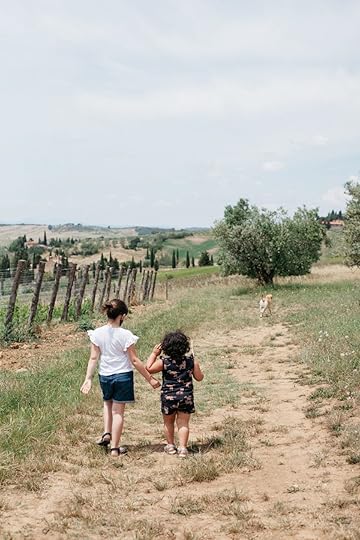
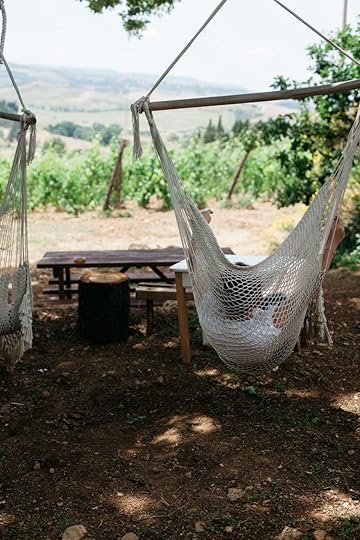
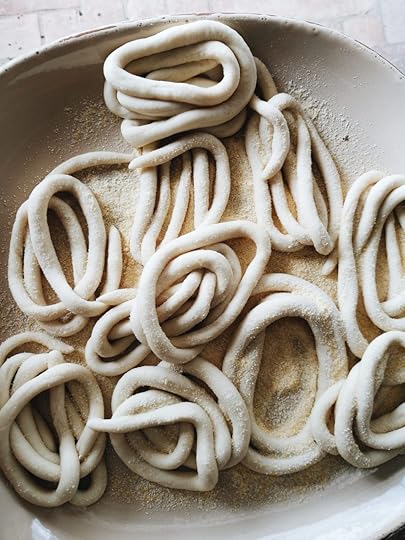
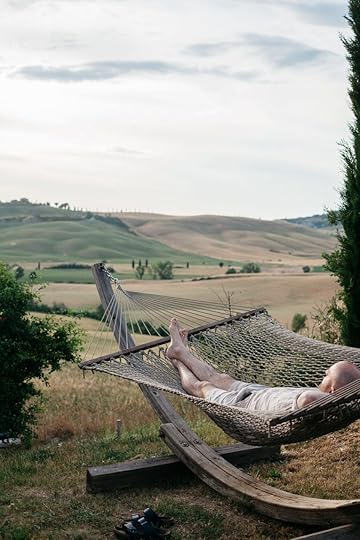
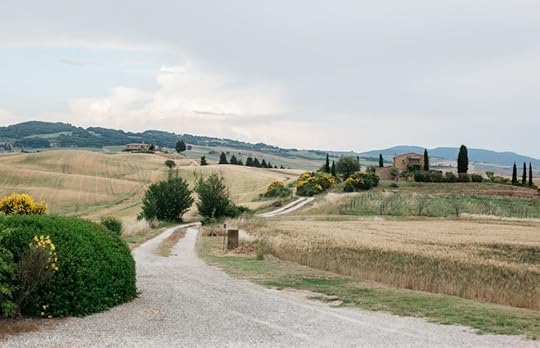
To participate, the cost per adult is 3500 euro (children 2000 euro). This price includes everything (board, food, drinks, activities, and your charming hosts) except what you choose to do during your free time. To confirm your place we ask a 40% deposit. Note that we have limited space of only 6 rooms, with a possible wait list for a second week.
Covid-19: We will do everything to operate in a covid-safe environment, so guests (children 12 and under are exempt) will need to show either a covid-19 negative test or proof of recovery from covid-19, or vaccination, which you will likely have to do anyway on your travels here. Your own travel insurance (not included) is a must.
If you would like to register for this workshop, please send an email to martin@quartiercollective.com for the FAQs and to submit your registration.
Emiko Davies's Blog
- Emiko Davies's profile
- 13 followers



